
Stubborn Attachments: A Vision for a Society of Free, Prosperous, and Responsible Individuals
by
Tyler Cowen
Published 15 Oct 2018
Special thanks go to my agent, Teresa Hartnett, to Brianna Wolfson for her work on the publishing side, to Tyler Thompson and Kevin Wong for the design of the book, to Rebecca Hiscott for editing, and to Patrick Collison for his interest in publishing this book with Stripe. Biography Tyler Cowen is a Holbert L. Harris Professor at George Mason University and Director of the Mercatus Center. He received his PhD in economics from Harvard University in 1987. His book The Great Stagnation: How America Ate the Low-Hanging Fruit of Modern History, Got Sick, and Will (Eventually) Feel Better was a New York Times best seller. He was recently named in an Economist poll as one of the most influential economists of the last decade, and several years ago Bloomberg Businessweek dubbed him “America’s Hottest Economist.”
…
Wealthier societies are more stable, offer better living standards, produce better medicines, and ensure greater autonomy, greater fulfillment, and more sources of fun. If we want to sustain our trends of growth, and the overwhelmingly positive outcomes for societies that come with it, every individual must become more concerned with the welfare of those around us. So, how do we proceed? Tyler Cowen, in a culmination of twenty years of thinking and research, provides a roadmap for moving forward. In this new book, Stubborn Attachments: A Vision for a Society of Free, Prosperous, and Responsible Individuals, Cowen argues that our reason and common sense can help free us of the faulty ideas that hold us back as people and as a society.
…
He also cowrites a blog at marginalrevolution.com, runs a podcast series called “Conversations with Tyler,” and has cofounded an online economics education project, mruniversity.com. His most recently published book was The Complacent Class: The Self-Defeating Quest for the American Dream. Stubborn Attachments: A Vision for a Society of Free, Prosperous, and Responsible Individuals © 2018 Tyler Cowen All rights reserved. No part of this publication may be reproduced or transmitted in any form or by any means, electronic or mechanical, including photocopying, recording or any other information storage and retrieval system, without prior permission in writing from the publisher. Published in the United States of America by Stripe Press / Stripe Matter Inc.

Boom: Bubbles and the End of Stagnation
by
Byrne Hobart
and
Tobias Huber
Published 29 Oct 2024
Materials science continues to advance, biohacking has gone from fantasy to hobby, energy entrepreneurs have reversed the decades-long decline in American oil output, and Bitcoin is reengineering the civilizational substrate of money. Yet the rate of progress is much slower than it was in the mid-20th century. What happened? Sources of the Great Stagnation Dominant accounts of techno-economic stagnation focus on a single overarching explanation: The low-hanging fruit has already been picked. In his 2011 book The Great Stagnation, economist Tyler Cowen identifies three pivotal developments that accelerated technological progress: the cultivation of land, the exploitation of 18th- and 19th-century scientific breakthroughs, and the increasing value of education.
…
Levine, and Luke Pardue, “The Puzzle of Falling US Birth Rates Since the Great Recession,” Journal of Economic Perspectives 36, no. 1 (Winter 2022): 151–176. 16 While it is undoubtedly important to preserve the quality of life for older people, doing so tends to contribute little to economic growth. In fact, one of the reasons for the slowdown in productivity growth has been higher spending on health care, a sector in which productivity gains have been difficult to achieve. Escaping the Great Stagnation is the only way to achieve the economic growth required to make good on existing promises to the elderly. 17 Tyler Cowen, “The New Tesla Is Great, But It Isn’t Progress,” Bloomberg, August 1, 2017, https://www.bloomberg.com/view/articles/2017-08-01/the-new-tesla-is-great-but-it-isn-t-progress. Cowen notes that even if we move away from energy-dense fossil fuels, the building of solar panels, wind turbines, and hydroelectric plants and the production of electric vehicles and storage batteries, which use massive amounts of rare-earth elements and critical metals, can offset any carbon emissions savings.
…
“Age and Scientific Performance.” American Journal of Sociology 84 (1979): 958–977. Collison, Patrick, Tyler Cowen, and Patrick Hsu. “What We Learned Doing Fast Grants.” Future, June 15, 2021. https://future.com/what-we-learned-doing-fast-grants/. Collison, Patrick, and Michael Nielsen. “Science Is Getting Less Bang for Its Buck.” The Atlantic, November 16, 2018. Colquhoun, David. “Challenging the Tyranny of Impact Factors.” Nature 423 (2003): 479. Cowen, Tyler. The Great Stagnation: How America Ate All the Low-Hanging Fruit of Modern History, Got Sick, and Will (Eventually) Feel Better.
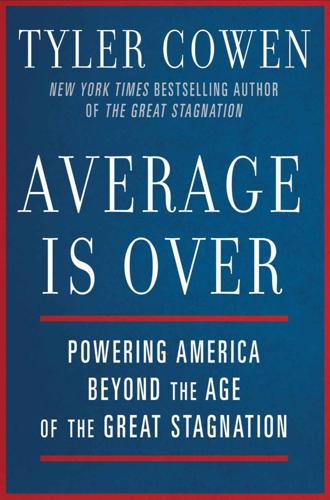
Average Is Over: Powering America Beyond the Age of the Great Stagnation
by
Tyler Cowen
Published 11 Sep 2013
ALSO BY TYLER COWEN An Economist Gets Lunch The Great Stagnation The Age of the Infovore Discover Your Inner Economist DUTTON Published by the Penguin Group Penguin Group (USA) Inc., 375 Hudson Street, New York, New York 10014, USA USA | Canada | UK | Ireland | Australia | New Zealand | India | South Africa | China Penguin Books Ltd, Registered Offices: 80 Strand, London WC2R 0RL, England For more information about the Penguin Group visit penguin.com. Copyright © 2013 by Tyler Cowen All rights reserved. No part of this book may be reproduced, scanned, or distributed in any printed or electronic form without permission.
…
Please do not participate in or encourage piracy of copyrighted materials in violation of the author’s rights. Purchase only authorized editions. REGISTERED TRADEMARK—MARCA REGISTRADA LIBRARY OF CONGRESS CATALOGING-IN-PUBLICATION DATA Cowen, Tyler. Average is over : powering America beyond the age of the great stagnation / Tyler Cowen. pages cm Includes bibliographical references and index. ISBN 978-0-698-13816-2 1. Economic forecasting—United States. 2. United States—Economic conditions—2009- 3. United States—Economic policy—2009- I. Title. HC106.84.C69 2013 330.973—dc23 2013016255 While the author has made every effort to provide accurate telephone numbers, Internet addresses, and other contact information at the time of publication, neither the publisher nor the author assumes any responsibility for errors or for changes that occur after publication.
…
On how much of the US economy comes from China, see Galina Hale and Bart Hobijn, “The U.S. Content of ‘Made in China’,” Federal Reserve Board of San Francisco Economic Letter, August 8, 2011. For an overview of the research on the connection between immigration and offshoring, see Tyler Cowen, “How Immigrants Create More Jobs,” The New York Times, October 30, 2010. On the importance of economic clustering, see the blog post by Noah Smith, “Great Stagnation . . . or Great Relocation?”, http://noahpinionblog.blogspot.com/2011/09 /great-stagnationor-great-relocation.html. On how cities are diverging, see Sabrina Tavernise, “A Gap in College Graduates Leaves Some Cities Behind,” The New York Times, May 30, 2012.

Human Frontiers: The Future of Big Ideas in an Age of Small Thinking
by
Michael Bhaskar
Published 2 Nov 2021
From quantum biology, nanotechnology and exoplanet astronomy to nudge unit governance, blockchain and virtual worlds, surely this is a uniquely fecund moment when the frontier is expanding at a record and still accelerating pace. Mounting evidence suggests the opposite. A lively debate is calling into question these dominant assumptions about our place in history and the default nature of progress. As much as anyone, the economist Tyler Cowen rang the alarm when he called the present, particularly in the West, the Great Stagnation. So let's call it the Great Stagnation Debate. Nicholas Negroponte believes we exist amid a ‘Big Idea Famine’. Others see not so much an innovation machine as an ‘Innovation Illusion’. The economist Robert Gordon talks about the ‘fall of growth’, while the physicist Lee Smolin talks about a science no longer capable of revolutionary thought.
…
And Jones and his colleagues aren't alone among economists. Evidence is mounting from across the field. * Economists are increasingly sceptical about claims that we live in an age of radical innovation. High-profile names like Lawrence Summers, Robert Gordon and Tyler Cowen elaborate the idea of ‘secular stagnation’, citing that strange slowing of Western economies despite a surface-level technological abundance. Cowen's ‘Great Stagnation’ is exactly what you'd expect if research productivity were to decline at 5.1 per cent a year.51 Prior to the 1970s, living standards doubled every couple of decades. Median wages have since been roughly flat. Median income doubled between 1947 and 1973, but in real terms grew only 22 per cent in the period 1973 to 2004.52 If the postwar growth rate had continued, by 2010 the median US family income would have been $90,000.
…
Productivity growth has been much slower over the 3IR than before. Since 1970, Total Factor Productivity (TFP), the key measure of how technology boosts growth, has grown at only a third of the pace achieved between 1920 and 1970, leaving us fully 73 per cent behind the postwar trend.17 In the words of Tyler Cowen and Ben Southwood: ‘TFP growth probably is the best contender for how to measure scientific progress. And overall TFP measures do show declines in the rate of innovativeness, expressed as a percentage of GDP.’ 18 In short, it appears that recent ideas have failed to have the same impact as those of the earlier generation.

Restarting the Future: How to Fix the Intangible Economy
by
Jonathan Haskel
and
Stian Westlake
Published 4 Apr 2022
Once the gods favoured us, but their favour has now been withdrawn, and we find it difficult to restore the golden age of prosperity. Some economic explanations for the current productivity downturn pin the blame on exogenous events. The influential narratives of growth slowdown by Tyler Cowen (The Great Stagnation) and Robert Gordon (The Rise and Fall of American Growth) fit into this time-honoured tradition.23 Both argue that a range of headwinds meant that growth, both from technological progress and from human factors such as improvements in education, had slowed down; Gordon in particular remains pessimistic that it will speed up again in the future.
…
FIXING OUR CHANGED ECONOMY 119 4 “The Progress of Science and Useful Arts”: Reforming Public Investment and Intellectual Property 121 5 Financial Architecture: Finance and Monetary Policy in an Intangibles-Rich Economy 148 6 Making Cities Work Better 183 7 Reducing Dysfunctional Competition 211 Conclusion: Restarting the Future 240 Notes 263 References 279 Index 297 FIGURES AND TABLES Figures 1.1 Output per Capita Relative to Prefinancial Crisis Trends 1.2 Tobin’s Q in the United States 1.3 Growth by Income Group in the World, 1980–2016 1.4 Performance Gaps 1.5 Average Global Markup, 2000–2015 1.6 Interest Rates since 1980, Advanced Countries 1.7 Growth in the Frontier Economies since 1300 1.8 Estimated Markups Excluding Cost of Goods Sold (United States, Firms in Compustat) 1.9 US Investment Rates, 1977–2017 1.10 Tangible and Intangible Investment, Major Developed Economies 1.11 Intangible Investment: Actual Growth versus Trend Growth (Trend from 1997–2007) 1.12 Capital Service Growth Trends 2.1 TFP and Intangible Capital Services Growth 2.2 Rates of Return in the United States with and without Intangibles 2.3 Evolution of Concentration (Share of Top Eight Firms) by Intangible Intensity 2.4 Evolution of Productivity Dispersion by Intangible Intensity 3.1 Ambrogio Lorenzetti, The Effects of Good Governance on Siena and Its Territory, Public Palace, Siena 4.1 The Tabarrok Curve 5.1 Yields on Safe Assets and Capital, 1995–2015 5.2 Intangible Intensity and the Return on Capital Spread 6.1 Percentage Intending to Use Increased Home Working as a Permanent Business Model 6.2 Net Percentage Expecting Increased Home Working as Permanent versus Net Percentage Reporting Increased Productivity from Home Working 7.1 Top Eight Industry Concentration since 2002: Share of Top Eight Firms in Industry Sales in Thirteen Developed Countries 7.2 Profit Shares Inside and Outside the United States C.1 Providing Centralised Goods: The Constraint C.2 How Intangibles Affect the Trade-Off Tables 1.1 Sources of per Capita Growth in the Euro Area, the United Kingdom, and the United States 3.1 Conditions Needed for Exchange and Types of Institutions That Support Them 3.2 Exchange and Types of Institutions PREFACE AND ACKNOWLEDGMENTS This book has its origins in the thought-provoking conversations we had after the publication of Capitalism without Capital: The Rise of the Intangible Economy in 2017. We are very grateful for the insightful and generous comments we received from Martin Brassell, Stephen Cecchetti, Tyler Cowen, Diane Coyle, Chris Dillow, Daniel Finkelstein, Martin Fleming, Rana Foroohar, Bill Gates, John Harris, Constance Hunter, Richard Jones, John Kay, William Kerr, Saul Klein, Arnold Kling, Baruch Lev, Yuval Levin, Ehsan Masood, George Molloan, Ataman Ozyilidirim, Robert Peston, Reihan Salam, Michael Saunders, Dan Sichel, David Smith, Tom Sutcliffe, Bart Van Ark, Callum Williams, Martin Wolf, and many others.
…
In addition, in recent years economists have documented an increase in the markup between prices and marginal costs that firms appear to be earning (figure 1.5).13 This work is nicely summarised in an excellent book, The Great Reversal, by the economist Thomas Philippon.14 At the level of individual workers, the data show signs of declining dynamism. Contrary to popular myths about job-hopping millennials, younger workers change employers significantly less frequently than previous generations did. They are also less likely to move from one city to another for work. Economist Tyler Cowen describes these tendencies as symptoms of an emerging “complacent class” that is “working harder than ever to postpone change.”15 FIGURE 1.5: Average Global Markup, 2000–2015. Source: Diez, Fan, and Villegas-Sanchez 2019. But there’s something incongruous here. If you present the average worker or manager with evidence that markets are becoming less competitive and workers more complacent, they will respond with something ranging from surprise to disbelief.

A World Without Work: Technology, Automation, and How We Should Respond
by
Daniel Susskind
Published 14 Jan 2020
Andy Haldane, “Labour’s Share,” speech at the Trades Union Congress, London, 12 November 2015; Richard Partington, “More Regular Work Wanted by Almost Half Those on Zero-Hours,” Guardian, 3 October 2018. 40. Quoted in Friedman, “Born to Be Free.” 41. Tyler Cowen, Average Is Over: Powering America Beyond the Age of the Great Stagnation (New York: Dutton, 2013), p. 23. 42. Lowrey, Give People Money, p. 15. 7. STRUCTURAL TECHNOLOGICAL UNEMPLOYMENT 1. Chris Hughes, Fair Shot: Rethinking Inequality and How We Earn (London: Bloomsbury, 2018), p. 82. 2. The argument of this chapter runs through my doctorate, Susskind, “Technology and Employment.”
…
Indeed, the upheaval and distress caused by technological change eventually contributed to the case for the welfare state, perhaps the most radical invention of the twentieth century. None of what has been said about displaced workers eventually finding new jobs feels like cause for celebration. To paraphrase the economist Tyler Cowen, perhaps the future will be like the past—and that is why we ought not to be optimistic about the future of work.24 Figure 1.2: The Unemployment Rate in Britain, 1760–190023 Nor is it the case, at a quick glance, that those who worried there might actually be less work in the future were completely wrong.
…
In rich corners of cities like London and New York it is possible to find odd economic ecosystems full of strange but reasonably well-paid roles that rely almost entirely on the patronage of the most prosperous in society: bespoke spoon carvers and children’s playdate consultants, elite personal trainers and star yoga instructors, craft chocolatiers and artisanal cheesemakers. The economist Tyler Cowen put it well when he imagined that “making high earners feel better in just about every part of their lives will be a major source of job growth in the future.”41 What is emerging is not just an economic division, where some earn much more than others, but a status division as well, between those who are rich and those who serve them.

Tyler Cowen - Stubborn Attachments A Vision for a Society of Free, Prosperous, and Responsible Individuals
by
Meg Patrick
Stubborn Attachments: A Vision for a Society of Free, Prosperous, and Responsible Individuals By Tyler Cowen In my new essay, Stubborn Attachments: A Vision for a Society of Free, Prosperous, and Responsible Individuals, I ask questions about social philosophy for the future of our world. Why do we prefer one choice over another? To what extent do we have good reasons for such preferences? Exactly which choices should we make? Short reads are available for Medium readers, or read the whole thing, or find a full download of the essay at this pdf or pdf without images for Kindle. — Tyler Cowen, Mercatus Center at George Mason University, 3434 Washington Blvd, Arlington, VA 22201, tcowen@gmu.edu.
…
Just as the present appears remarkable from the vantage point of the past, the future, at least provided growth continues, will offer comparable advances, including perhaps greater life expectancies, cures for debilitating diseases, and cognitive enhancements. Billions of people will have much better and longer lives. Many features of modern life might someday seem as backward as we now regard the large number of women who died in childbirth for lack of proper care. I have myself written of “the great stagnation” as a growth slowdown which overtook the Western world, starting in about 1973. It is a failure of imagination, however, to believe that human progress has run its course. The more plausible view is that progress is unevenly bunched, we have been in a slow period as of late, various new developments are percolating, and we should do our best to help them along.
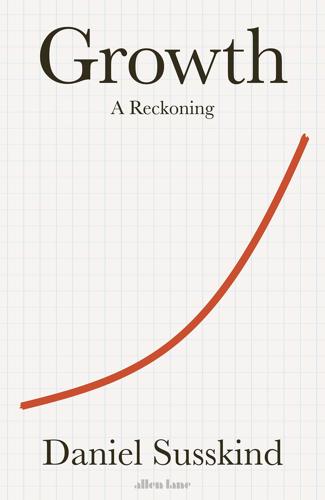
Growth: A Reckoning
by
Daniel Susskind
Published 16 Apr 2024
But from then on, the story is very similar: a substantial and sustained slump in growth. Figure 1: 10-year average growth rate of real GDP per capita2 With these numbers in mind, it is unsurprising that leading economists have been pessimistic about our prospects for more than a decade. Tyler Cowen, in his 2011 book The Great Stagnation, wrote that, ‘life is better and we have more stuff, but the pace of change has slowed down compared to what people saw two or three generations ago.’3 Robert Gordon, in his 2016 The Rise and Fall of American Growth, made the case that ‘future growth will be slower than in the past.’4 Dietrich Vollrath, in his 2020 book Fully Grown, explained how a slowdown in American growth ‘has forced economists and policy makers to recalibrate their expectations of how fast the economy will grow in the future’.5 Larry Summers spent the 2010s resuscitating Alvin Hansen’s old idea of ‘secular stagnation’, where a country gets stuck in a low-growth rut, in order to explain why anaemic economic progress was plaguing many parts of the world.
…
Unleashing Growth 1 See Dietrich Vollrath, Fully Grown: Why a Stagnant Economy is a Sign of Success (London: Chicago University Press, 2020), Chapter 2 and p. 218 for a discussion of this approach. 2 Data from Penn World Tables, Volume 10. This is an updated version of Figure 2.4 in Vollrath, Fully Grown, calculated using the strategy on p. 218. 3 Tyler Cowen, The Great Stagnation (Boston, MA: E.P Dutton, 2011), Introduction. 4 Robert Gordon, The Rise and Fall of American Growth (Princeton, NJ: Princeton University Press, 2016), p. 23. 5 Vollrath, Fully Grown, p. vii. 6 Data from Penn World Tables, Volume 10. This is an updated version of Figure 2.4 in Vollrath, Fully Grown, calculated using the strategy on p. 218. 7 Brad DeLong, Slouching towards Utopia (2022), pp. 3 and 5. 8 Paul Krugman, The Age of Diminished Expectations (MIT Press, 1997), quoted in ‘Productivity’, The Economist, 1 May 2008. 9 For better and worse.
…
My sense, though, is that it would be things that we take most for granted, like the availability of light, which would most astound people from the past. Light bulbs are so commonplace in prosperous countries that we do not properly appreciate them, but it is that same ubiquity which would most amaze a visitor from the past. The economist Tyler Cowen, in a similar thought experiment, imagined our time traveller’s reaction if they could spend a day with Bill Gates. ‘The most impressive features of Gates’s life, seen from the point of view of a person from the eighteenth century, are those shared by most citizens of wealthy countries today,’ he concluded.38 It is the basic hygiene and the common smartphones of Gates’s life that would leave the strongest impression, not the exclusive supercars, private planes or handsome estates.
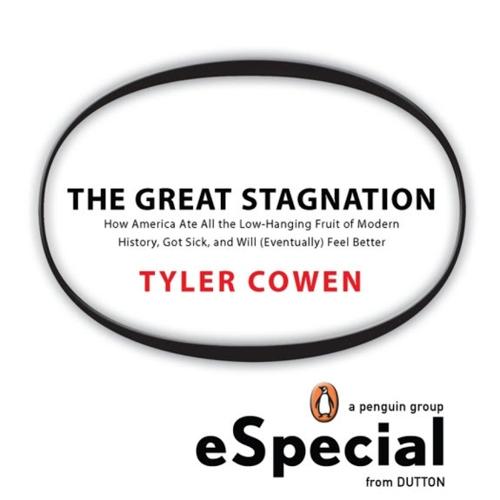
The Great Stagnation
by
Tyler Cowen
Published 24 Jan 2011
.); Penguin Books Ltd, 80 Strand, London WC2R 0RL, England; Penguin Ireland, 25 St Stephen’s Green, Dublin 2, Ireland (a division of Penguin Books Ltd); Penguin Group (Australia), 250 Camberwell Road, Camberwell, Victoria 3124, Australia (a division of Pearson Australia Group Pty Ltd); Penguin Books India Pvt Ltd, 11 Community Centre, Panchsheel Park, New Delhi—110 017, India; Penguin Group (NZ), 67 Apollo Drive, Rosedale, North Shore 0632, New Zealand (a division of Pearson New Zealand Ltd); Penguin Books (South Africa) (Pty) Ltd, 24 Sturdee Avenue, Rosebank, Johannesburg 2196, South Africa Penguin Books Ltd, Registered Offices: 80 Strand, London WC2R 0RL, England Published by Dutton, a member of Penguin Group (USA) Inc. First printing, February 2011 Copyright © 2010 by Tyler Cowen All rights reserved <Dutton logo> REGISTERED TRADEMARK—MARCA REGISTRADA eISBN : 978-1-101-50225-9 Chart on page 14 reprinted from Technological Forecasting and Social Change, Vol 72/Issue 8, Jonathan Huebner, “A possible declining trend for worldwide innovation,” Copyright (October, 2005), with permission from Elsevier.
…
On job creation and the iPod, see Greg Linden, Jason Dedrick, and Kenneth L. Kraemer, “Innovation and Job Creation in a Global Economy: The Case of Apple’s iPod,” 2008, available at http://pcic.merage.uci.edu/papers/2009/InnovationAndJobCreation.pdf. Chapter 4 The Government of Low-Hanging Fruit On who pays how much of the tax burden, see Tyler Cowen and Alex Tabarrok, Modern Principles: Macroeconomics, New York: Worth Publishers, 2009, ch. 16, p. 340. The historian S. E. Finer first suggested that technology was behind the rise of big government, though he did not consider this claim in the context of public-choice issues. See S. E. Finer, The History of Government from the Earliest Times, Oxford: Oxford University Press, 1997.
…
Valuable new ideas have become quite scarce, and so the small number of people who hold the rights to new ideas—whether it be the useful Facebook or the more dubious forms of mortgage-backed securities—earned higher relative returns than in earlier periods. The “rise in income inequality” and the “slowdown in ideas production” are two ways of describing the same phenomenon, namely that current innovation is more geared to private goods than to public goods. If one sentence were to sum up the mechanism driving the Great Stagnation, it is this: Recent and current innovation is more geared to private goods than to public goods. That simple observation ties together the three major macroeconomic events of our time: growing income inequality, stagnant median income, and, as we will see in chapter five, the financial crisis.
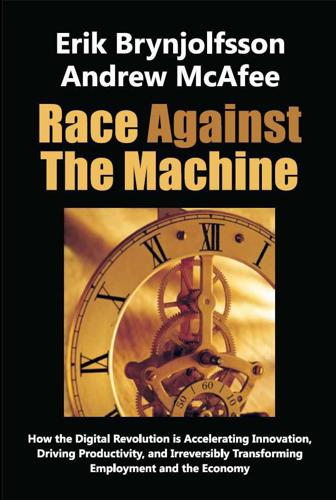
Race Against the Machine: How the Digital Revolution Is Accelerating Innovation, Driving Productivity, and Irreversibly Transforming Employment and the Economy
by
Erik Brynjolfsson
Published 23 Jan 2012
What America has been experiencing since 2007, in short, is another case of the business cycle in action, albeit a particularly painful one. A second explanation for current hard times sees stagnation, not cyclicality, in action. Stagnation in this context means a long-term decline in America’s ability to innovate and increase productivity. Economist Tyler Cowen articulates this view in his 2010 book, The Great Stagnation: We are failing to understand why we are failing. All of these problems have a single, little noticed root cause: We have been living off low-hanging fruit for at least three hundred years. … Yet during the last forty years, that low-hanging fruit started disappearing, and we started pretending it was still there.
…
On balance, the official productivity data likely underestimate the true improvements of our living standards over time. Stagnant Median Income In contrast to labor productivity, median family income has risen only slowly since the 1970s (Figure 3.2) once the effects of inflation are taken into account. As discussed in Chapter 1, Tyler Cowen and others point to this fact as evidence of economy-wide stagnation. In some ways, Cowen understates his case. If you zoom in on the past decade and focus on working-age households, real median income has actually fallen from $60,746 to $55,821. This is the first decade to see declining median income since the figures were first compiled.
…
The stagnation argument doesn’t ignore the Great Recession, but also doesn’t believe that it’s the principle cause of the current slow recovery and high joblessness. These woes have a more fundamental source: a slowdown in the kinds of powerful new ideas that drive economic progress. This slowdown pre-dates the Great Recession. In The Great Stagnation, in fact, Cowen maintained that it’s been going on since the 1970s, when U.S. productivity growth slowed and the median income of American families stopped rising as quickly as it had in the past. Cowen, Phelps, and other “stagnationists” hold that only higher rates of innovation and technical progress will lift the economy out of its current doldrums.
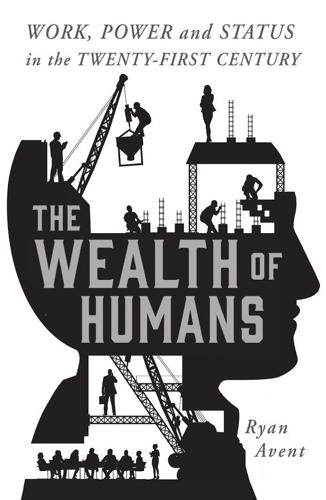
The Wealth of Humans: Work, Power, and Status in the Twenty-First Century
by
Ryan Avent
Published 20 Sep 2016
In 1965 Gordon Moore, a co-founder of Intel, reckoned his industry could double the number of transistors in an integrated circuit roughly once every two years, and that this doubling would likely continue.7 This astonishing pace of progress has been maintained for most of the last half-century, changing computing from something done at great expense by house-sized machines to something done all the time in tiny devices which now rest in the pockets of about 30 per cent of the world’s population. This slice of history played out during a period that economist Tyler Cowen, of George Mason University, has labelled the ‘Great Stagnation’.8 A half-century of extraordinary gains in computing power somehow did not return humanity to the days of dizzying economic and social change of the nineteenth century. In 1987 the Nobel Prize-winning economist Robert Solow mused, in a piece pooh-poohing the prospect of a looming technological transformation, that the evidence for the revolutionary power of computers simply wasn’t there.
…
Techno-optimists, such as venture capitalist Marc Andreessen,22 lampoon the worriers as luddites and point to rising employment around the world as proof that their fears are overblown, while many left-leaning thinkers continue to blame globalization and the erosion of worker bargaining power, rather than robots, for stagnant pay and rising inequality in rich countries. Some writers, like Brynjolfsson and McAfee, and also Tyler Cowen, whose 2013 book, Average is Over,23 speculates about America’s economic future, anticipate a future in which broad economic and social change occurs incrementally, and in which sensible policy reforms (to education, for example) can make a technologically induced decline in the need for labour easier for households to manage.
…
Most importantly, I am indebted to Zanny Minton Beddoes, without whose confidence and trust I would not have found myself in this position, and whose brilliance has made me a better thinker and writer. The ideas in the book were also shaped by years of debate and discussion with fellow economics writers and bloggers. I am especially grateful to Tyler Cowen, Matthew Yglesias, Karl Smith, Steve Randy Waldman and Brad DeLong, whose blogs have been a trusted sound-board off which I could bounce ideas. The book itself has been moulded by many hands. The text was immeasurably improved thanks to comments on early drafts from David Schleicher and Soumaya Keynes, and it was a great pleasure to work with Anna Hervé, who helped shape and polish the text.

Rise of the Robots: Technology and the Threat of a Jobless Future
by
Martin Ford
Published 4 May 2015
If innovation is the primary driver of prosperity, then perhaps stagnant incomes imply that the problem is the rate at which new inventions and ideas are being generated, rather than the impact of technology on the working and middle classes. Maybe computers aren’t really all that important, and the slow rate of progress on a broader front is what matters most. Several economists have made this case. Tyler Cowen, an economist at George Mason University, proposed in his 2011 book The Great Stagnation that the US economy has run into a temporary plateau after consuming all the low-hanging fruit of accessible innovation, free land, and underutilized human talent. Robert J. Gordon of Northwestern University is even more pessimistic, arguing in a 2012 paper that economic growth in the United States, hampered by a slow pace of innovation and a number of “headwinds”—including excessive debt, an aging population, and shortfalls in our educational system—may essentially be over.1 In order to gain some insight into the factors that influence the pace of innovation, we may find it useful to think in terms of the historical path that nearly all technologies follow.
…
As noted in the Introduction, the table shows peak weekly wages of about $341 in 1973 and $295 in December 2012, measured in 1984 dollars. I have adjusted these to 2013 dollars using the Bureau of Labor Statistics’ inflation calculator at http://www.bls.gov/data/inflation_calculator.htm. 12. On median household incomes versus per capita GDP, see Tyler Cowen, The Great Stagnation: How America Ate All the Low-Hanging Fruit of Modern History, Got Sick, and Will (Eventually) Feel Better (New York: Dutton, 2011), p. 15, and Lane Kenworthy, “Slow Income Growth for Middle America,” September 3, 2008, http://lanekenworthy.net/2008/09/03/slow-income-growth-for-middle-america/.
…
pagewanted=all. 53. Eric Mack, “Google Has a ‘Near Perfect’ Universal Translator—for Portuguese, at Least,” CNET News, July 28, 2013, http://news.cnet.com/8301–17938_105–57595825–1/google-has-a-near-perfect-universal-translator-for-portuguese-at-least/. 54. Tyler Cowen, Average Is Over: Powering America Beyond the Age of the Great Stagnation (New York: Dutton, 2013), p. 79. 55. John Markoff, “Armies of Expensive Lawyers, Replaced by Cheaper Software,” New York Times, March 4, 2011, http://www.nytimes.com/2011/03/05/science/05legal.html. 56. Arin Greenwood, “Attorney at Blah,” Washington City Paper, November 8, 2007, http://www.washingtoncitypaper.com/articles/34054/attorney-at-blah. 57.
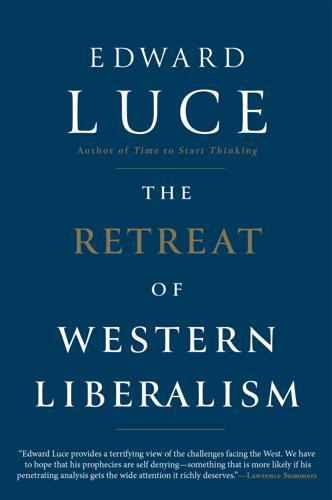
The Retreat of Western Liberalism
by
Edward Luce
Published 20 Apr 2017
The peak age of high growth and disruptive technology is behind us. Forget the power of the iPhone. Stop exulting about Google’s driverless car. Such wonders pale beside the changes felt by earlier generations. They are unlikely to be matched by our age. Gordon’s thesis is not entirely new. Tyler Cowen made a similar argument with his sparkling monograph The Great Stagnation (ironically first published as an ebook). Nor is it as counterintuitive as it sounds to our app-crowded, WiFi-saturated twenty-first-century brains. Gordon points out that for most of history, growth was absent. Between the fall of the Roman Empire and the Middle Ages there was basically none.
…
America’s per-capita rate of triadic patent applications – those that are filed in the US, Europe and Japan, which screens out the frivolous ones – has fallen by a quarter since 2000.25 The fastest-growing units in the big Western companies are the legal and public relations departments. Big companies devote the bulk of their earnings to buying back shares and boosting dividend payments. They no longer invest anything like what they used to in research and development. The future loses out. Tyler Cowen, who is perhaps the most lateral-thinking economist I know, talks of the rise of America’s ‘complacent classes’ – the creep of a risk-averse and conformist mindset. In a supposed age of hyper-individualism, eccentricity is penalised. Software screens out job applicants before they have a chance to show their faces.
…
The number of unoccupied apartments in New York rose by almost three-quarters at the turn of the century to thirty-four thousand in 2011.49 London has witnessed similar growth. The new residents then lock in their gains by restricting land use, which keeps values high. Richard Florida calls them the ‘new urban Luddites’, who exploit an ‘enormous and complex thicket of zoning laws and other land use regulations’ to keep the others out. Tyler Cowen has coined a new acronym to replace Nimbys (Not in My Backyard): Bananas (Build Absolutely Nothing Anywhere Near Anything).50 Such risk aversion breeds its own failure. So deeply rooted is gentrification that Richard Florida has now modified his widely acclaimed thesis about the rise of the creative classes.
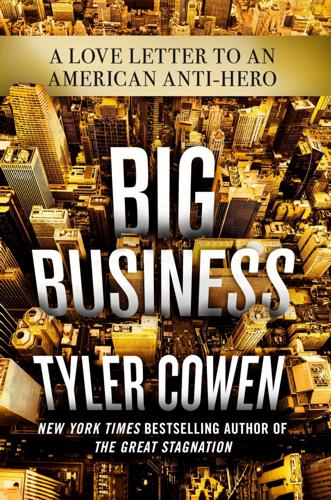
Big Business: A Love Letter to an American Anti-Hero
by
Tyler Cowen
Published 8 Apr 2019
Treasury See also T-bills venture capital American innovation and Verizon Vietnam War voice recording Volkswagen wages Walgreens Walmart Warren, Elizabeth Waze wealth management Wells Fargo WhatsApp whistleblowers Wi-Fi-enabled technology WikiLeaks Williamson, Oliver Wilson, David work altruism and economic oppression exploitation flow and human relationships and non-pay-related benefits potential burden of satisfaction of sexual harassment and stress and studies “work as a safe haven” effect work hours workplace freedom WolframAlpha World Bank World Trade Organization World Values Survey World War I World War II X-rays Yahoo YouTube Zak, Paul J. Zawadzki, Matthew J. Zingales, Luigi zombie banks Zuckerberg, Mark See also Facebook ALSO BY TYLER COWEN The Complacent Class Average Is Over The Great Stagnation An Economist Gets Lunch The Age of the Infovore Discover Your Inner Economist ABOUT THE AUTHOR TYLER COWEN, Ph.D., holds the Holbert L. Harris Chair in Economics at George Mason University. He is the author of a number of explanatory books and textbooks, including The Complacent Class, as well as the most-read economics blog worldwide, marginalrevolution.com.
…
Appendix: What Is a Firm, Anyway, and Why Do So Many Workers End Up So Frustrated? Acknowledgments Notes Selected Bibliography Index Also By Tyler Cowen About the Author Copyright BIG BUSINESS. Copyright © 2019 by Tyler Cowen. All rights reserved. For information, address St. Martin’s Press, 175 Fifth Avenue, New York, N.Y. 10010. www.stmartins.com Cover photograph of city © Predrag Vuckovic / Getty Images The Library of Congress has cataloged the print edition as follows: Names: Cowen, Tyler, author. Title: Big business: a love letter to an American anti-hero / Tyler Cowen. Description: New York: St. Martin’s Press, [2019] | Includes bibliographical references and index.

The Complacent Class: The Self-Defeating Quest for the American Dream
by
Tyler Cowen
Published 27 Feb 2017
See also crime wages and collectibles and gender and living standards and matching and mobility and outsourcing and productivity Wang, Ben Wang Wenyin War on Drugs Warner, Michael Washington, DC Watts riots Weather Underground Wikipedia YouTube. See also social media Zuckerberg, Mark ALSO BY TYLER COWEN Average Is Over The Great Stagnation An Economist Gets Lunch The Age of the Infovore Discover Your Inner Economist ABOUT THE AUTHOR TYLER COWEN (Ph.D.) holds the Holbert C. Harris chair in economics at George Mason University. He is the author of a number of textbooks and other thought-provoking works and writes the most-read economics blog worldwide, marginalrevolution.com.
…
Why Americans Stopped Rioting and Legalized Marijuana 7. How a Dynamic Society Looks and Feels 8. Political Stagnation, the Dwindling of True Democracy, and Alexis de Tocqueville as Prophet of Our Time 9. The Return of Chaos, and Why the Complacent Class Cannot Hold Notes References Index Also by Tyler Cowen About the Author Copyright THE COMPLACENT CLASS. Copyright © 2017 by Tyler Cowen. All rights reserved. Printed in the United States of America. For information, address St. Martin’s Press, 175 Fifth Avenue, New York, N.Y. 10010. www.stmartins.com Cover photographs: American flag © Photoline/Shutterstock; deflated ballon © Jeff Wasserman/Shutterstock.
…
Ultimately America decided it didn’t want a redo of all the turmoil of the 1960s and 1970s, and it did what was needed to stop that from happening. This added social stasis came roughly at the same time as a slowdown in the rate of technological progress, starting in the 1970s, as I outlined in my earlier book, The Great Stagnation. In 1973, the oil price shock and then some bad policy decisions hurt the American economy a great deal. The American government eventually repaired most of the policy mistakes, such as excess inflation, but since that time innovation and productivity growth have been relatively slow, and only the tech sector has been truly dynamic.

The Second Machine Age: Work, Progress, and Prosperity in a Time of Brilliant Technologies
by
Erik Brynjolfsson
and
Andrew McAfee
Published 20 Jan 2014
All that remained after 1970 were second-round improvements, such as developing short-haul regional jets, extending the original interstate highway network with suburban ring roads, and converting residential America from window unit air conditioners to central air conditioning.5 Gordon is far from alone in this view. In his 2011 book The Great Stagnation, economist Tyler Cowen is definitive about the source of America’s economic woes: We are failing to understand why we are failing. All of these problems have a single, little noticed root cause: We have been living off low-hanging fruit for at least three hundred years. . . . Yet during the last forty years, that low-hanging fruit started disappearing, and we started pretending it was still there.
…
Joseph Alois Schumpeter, Business Cycles: A Theoretical, Historical, and Statistical Analysis of the Capitalist Process (Philadelphia, NJ: Porcupine Press, 1982), p. 86. 4. Robert J. Gordon, Is U.S. Economic Growth Over? Faltering Innovation Confronts the Six Headwinds, Working Paper (National Bureau of Economic Research, August 2012), http://www.nber.org/papers/w18315. 5. Ibid. 6. Tyler Cowen, The Great Stagnation: How America Ate All the Low-hanging Fruit of Modern History, Got Sick, and Will (Eventually) Feel Better (New York: Dutton, 2011). 7. Gavin Wright, “Review of Helpman (1998),” Journal of Economic Literature 38 (March 2000): 161–62. 8. Boyan Jovanovic and Peter L. Rousseau, “General Purpose Technologies,” in Handbook of Economic Growth, ed.
…
Those benefits start small while the technology is immature and not widely used, grow to be quite big as the GPT improves and propagates, then taper off as the improvement—and especially the propagation—die down. When multiple GPTs appear at the same time, or in a steady sequence, we sustain high rates of growth over a long period. But if there’s a big gap between major innovations, economic growth will eventually peter out. We’ll call this the ‘innovation-as-fruit’ view of things, in honor of Tyler Cowen’s imagery of all the low-hanging fruit being picked. In this perspective, coming up with an innovation is like growing fruit, and exploiting an innovation is like eating the fruit over time. Another school of thought, though, holds that the true work of innovation is not coming up with something big and new, but instead recombining things that already exist.
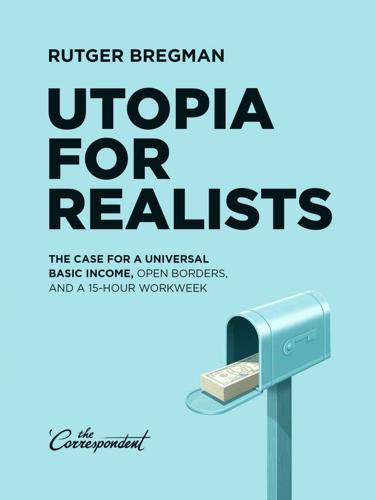
Utopia for Realists: The Case for a Universal Basic Income, Open Borders, and a 15-Hour Workweek
by
Rutger Bregman
Published 13 Sep 2014
“Leeds Woollen Workers Petition, 1786,” Modern History Sourcebook. http://www.fordham.edu/halsall/mod/1786machines.asp 33. Quoted in: Robert Skidelsky, “Death to Machines?” Project Syndicate (February 21, 2014). http://www.project-syndicate.org/commentary/robert-skidelsky-revisits-the-luddites--claim-that-automation-depresses-real-wages 34. Tyler Cowen, Average is Over. Powering America Beyond the Age of the Great Stagnation (2013), p. 23. 35. Tyler Cowen, The Great Stagnation, p. 172. 36. Quoted in: Daron Acemoglu and James A. Robinson, Why Nations Fail. The Origins of Power, Prosperity and Poverty (2012), p. 226. 37. Thomas Piketty, “Save capitalism from the capitalists by taxing wealth,” The Financial Times (March 28, 2014). http://www.ft.com/intl/cms/s/0/decdd76e-b50e-11e3-a746-00144feabdc0.html-axzz44qTtjlZN 5 The End of Poverty 1.
…
Inequality will continue to increase and everybody who hasn’t managed to learn a skill that machines cannot or will not be able to master will be sidelined. “Making high earners feel better in just about every part of their lives will be a major source of job growth in the future,” writes the American economist Tyler Cowen.34 Though the lower classes might have access to new amenities like cheap solar power and free Wi-Fi, the gap between them and the ultra-rich will be wider than ever. Beyond that, the rich and well-educated will continue to close ranks even as peripheral villages and towns grow more impoverished.
…
Heidi Shierholz, “Immigration and Wages: Methodological advancements confirm modest gains for native workers,” Economic Policy Institute (February 4, 2010). http://epi.3cdn.net/7de74e-e0cd834d87d4_a3m6ba9j0.pdf Also see: Gianmarco I.P. Ottaviano and Giovanni Peri, “Rethinking the Effect of Immigration on Wages.” http://www.nber.org/papers/w12497 39. Frederic Docquiera, Caglar Ozden, and Giovanni Peri, “The Wage Effects of Immigration and Emigration,” OECD (December 20, 2010). http://www.oecd.org/els/47326474.pdf 40. Tyler Cowen, Average is Over (2013) p. 169. 41. Corrado Giulietti, Martin Guzi, Martin Kahanec, and Klaus F. Zimmermann, “Unemployment Benefits and Immigration: Evidence from the EU,” Institute for the Study of Labor (October 2011). http://ftp.iza.org/dp6075.pdf On the U.S., see: Leighton Ku and Brian Bruen, “The Use of Public Assistance Benefits by Citizens and Non-citizen Immigrants in the United States,” Cato Institute (February 19, 2013). http://object.cato.org/sites/cato.org/files/pubs/pdf/workingpaper-13_1.pdf 42.

Overcomplicated: Technology at the Limits of Comprehension
by
Samuel Arbesman
Published 18 Jul 2016
In the realm of logistics: Steven Rosenbush and Laura Stevens, “At UPS, the Algorithm Is the Driver,” The Wall Street Journal, February 16, 2015, http://www.wsj.com/articles/at-ups-the-Algorithm-is-the-driver-1424136536. On the blog Marginal Revolution, Alex Tabarrok refers to this kind of intelligence as “opaque intelligence.” http://marginalrevolution.com/marginal revolution/2015/02/opaque-intelligence.html. the economist Tyler Cowen noted: Tyler Cowen, Average Is Over: Powering America beyond the Age of the Great Stagnation (New York: Dutton, 2013), 72. “both praised and panned”: Feng-Hsiung Hsu, Behind Deep Blue: Building the Computer That Defeated the World Chess Champion (Princeton, NJ: Princeton University Press, 2002). “slow, tortuous reading”: Flood and Goodenough, “Contract as Automaton.”
…
And in chess, a realm where computers are more powerful than humans and are able to win via pathways that the human mind can’t always see, the machines’ characteristic game choices are known as “computer moves”—the moves that a human would rarely make, the ones that are ugly but still get results. As the economist Tyler Cowen noted in his book Average Is Over, these types of moves often seem wrong, but they are very effective. When IBM’s Deep Blue was playing Garry Kasparov, it made a move so strange that it “was both praised and panned by different commentators,” according to one of Deep Blue’s builders. In fact, this highly odd but potentially brilliant move was eventually found to be due to a bug.
…
This play—tweaking a simulation of technological failure and seeing how it responds—can provide a greater comfort with large and unwieldy systems and can help us as we move forward through this world of increasingly complicated technology. We also need interpreters of what’s going on in these systems, a bit like TV meteorologists. Near the end of Average Is Over, the economist Tyler Cowen speculates about this new breed of future interpreters. He says they “will hone their skills of seeking out, absorbing, and evaluating this information. . . . They will be translators of the truths coming out of our networks of machines. . . . At least for a while, they will be the only people left who will have a clear notion of what is going on.”
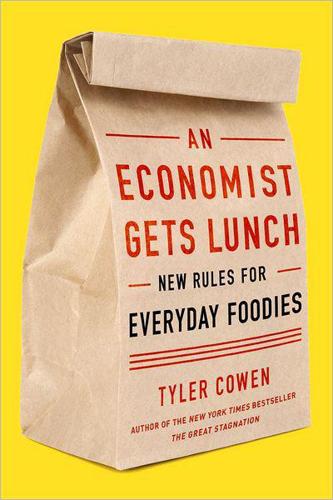
An Economist Gets Lunch: New Rules for Everyday Foodies
by
Tyler Cowen
Published 11 Apr 2012
AN ECONOMIST GETS LUNCH ALSO BY TYLER COWEN The Great Stagnation The Age of the Infovore Discover Your Inner Economist T Y L E R C O W E N A N E C O N O M I S T G E T S L U N C H New Rules for Everyday Foodies DUTTON DUTTON Published by Penguin Group (USA) Inc. 375 Hudson Street, New York, New York 10014, U.S.A. Penguin Group (Canada), 90 Eglinton Avenue East, Suite 700, Toronto, Ontario M4P 2Y3, Canada (a division of Pearson Penguin Canada Inc.); Penguin Books Ltd, 80 Strand, London WC2R 0RL, England; Penguin Ireland, 25 St. Stephen’s Green, Dublin 2, Ireland (a division of Penguin Books Ltd); Penguin Group (Australia), 250 Camberwell Road, Camberwell, Victoria 3124, Australia (a division of Pearson Australia Group Pty Ltd); Penguin Books India Pvt Ltd, 11 Community Centre, Panchsheel Park, New Delhi–110 017, India; Penguin Group (NZ), 67 Apollo Drive, Rosedale, Auckland 0632, New Zealand (a division of Pearson New Zealand Ltd); Penguin Books (South Africa) (Pty) Ltd, 24 Sturdee Avenue, Rosebank, Johannesburg 2196, South Africa Penguin Books Ltd, Registered Offices: 80 Strand, London WC2R 0RL, England Published by Dutton, a member of Penguin Group (USA) Inc.
…
First printing, April 2012 1 3 5 7 9 10 8 6 4 2 Copyright © 2012 by Tyler Cowen All rights reserved. No part of this book may be reproduced, scanned, or distributed in any printed or electronic form without permission. Please do not participate in or encourage piracy of copyrighted materials in violation of the author’s rights. Purchase only authorized editions. REGISTERED TRADEMARK—MARCA REGISTRADA LIBRARY OF CONGRESS CATALOGING-IN-PUBLICATION DATA Cowen, Tyler. An economist gets lunch : new rules for everyday foodies / Tyler Cowen. p. cm. Includes bibliographical references and index. ISBN: 978-1-101-56166-9 1.
…
New Mexico foods are more likely to use fresh green chilies and green tomatillo sauces. Pork is the preferred meat, not beef. Mexican food from California uses more produce, as befits the diversified agriculture of the state. Avocados, sour cream, and Spanish olives are especially common. See Tyler Cowen, Creative Destruction: How Globalization is Changing the World’s Cultures (Princeton: Princeton University Press), 2002, chapter four, for information on the differential spread of television across the United States and Europe. For the figures on working women, see Martha Hahn Sugar, When Mothers Work, Who Pays?

The Impulse Society: America in the Age of Instant Gratification
by
Paul Roberts
Published 1 Sep 2014
Some of this can be laid to historical timing: world-changing breakthroughs are a lot harder to come by these days in part because the easy ones have already been made. In times past, we were able to get massive increases in productivity by eliminating large and obvious inefficiencies—moving from animal-powered farming to mechanization, for instance, or switching from manure to synthetic fertilizers. But as George Mason University economist Tyler Cowen has argued, most of that “low-hanging fruit” has all been picked and eaten, and today it’s simply much harder, and more costly, to achieve similarly epoch-defining breakthroughs. But it’s not just that innovation has gotten harder. One can also make the case that, under the financialized business models that emerged with the Impulse Society, the way we pursue innovation has gotten weaker.
…
The other, larger wing of the legal profession will be a sort of mass-production, Walmart model that digitally processes hundreds of thousands of simple cases, like uncontested divorce or mortgage contracts. This two-tier market is the pattern that some economists foresee for the entire job market. The scenario is most graphically laid out by Tyler Cowen, the economist, in his recent book Average Is Over. In Cowen’s version of the future, the top 15 percent of the workforce will be made up of what he calls “hyperproductives”—individuals who are extremely bright and who either know how to use the latest technologies or know how to manage other hyperproductives, and for whom each new generation of corporate efficiencies will mean an ever-larger slice of the pie.
…
Given the huge development costs these medical technologies will require, and the industry’s ever-more-intense need for prompt returns, it’s not so hard to imagine a medical future that looks an awful lot like the medical present—that is, where more and more of the truly life-altering benefits of innovation flow to the part of the market that can most afford them. Even if we managed to enact a single-payer system, we’d still be looking at a health culture very much along the lines of Tyler Cowen’s bifurcated, end-of-average society, where the wealthy get not only better health care but also more access to the sorts of innovations that are likely to dramatically extend life spans. What will society look like in thirty years, when Cowen’s hyperproductives are not only wealthier than everyone else, but living much longer?

The Gated City (Kindle Single)
by
Ryan Avent
Published 30 Aug 2011
This adjustment process takes a while. And while it continues, incomes for many American workers will stagnate, prices for many basic resources will rise, and growth may slow. Ultimately everyone will be better off, but during the transition period some people will be made worse off. - The low-hanging fruit is gone. Economist Tyler Cowen argues that the rich world rode a wave of low-hanging fruit to prosperity in the years between the onset of the Industrial Revolution and the chaotic 1970s. Lots of empty land was put to use. Uneducated populations became highly educated. And centuries of revolutionary technological innovations were exploited to their fullest.
…
Wolff, Edward, “Spillovers, Linkages, and Productivity Growth in the US Economy, 1958 to 2007”, NBER Working Paper No. 16864, March 2011. Wright, Gavin, “The Economic Revolution in the American South”, Journal of Economic Perspectives, Volume 1, Issue 1, Summer 1987. ACKNOWLEDGMENTS I could not have done this alone. I am indebted to Zanny Minton-Beddoes for her patience, encouragement, and insight. Tyler Cowen has been a constant source of inspiration and an indispensible resource. I offer sincere thanks to Matthew Yglesias for being a kindred intellectual spirit and a partner in competitive cooperation. I am grateful to Rachel Horwood for her indefatigable research efforts. And I would like to thank and dedicate this book to my wife, Lisa, without whom it, and much else besides, would not have been possible
…
Bleakley, Hoyt and Jeffrey Lin, “Portage: Path Dependence and Increasing Returns in U.S. History”, Federal Reserve Bank of Philadelphia Working Paper No. 10-27, August 20, 2010. Ciccone, Antonio and Robert Hall, “Productivity and the Density of Economic Activity”, American Economic Review, Vol. 86, No. 1, March 1996. Cowen, Tyler, The Great Stagnation: How America Ate All the Low-Hanging Fruit of Modern History, Got Sick, and Will (Eventually) Feel Better, Dutton, January 25, 2011. Davies, Phil, “Sizing Up Job Creation”, Federal Reserve Bank of Minneapolis, September 2010. Davis, Morris, Jonas Fisher, and Toni Whited, “Productivity and Employment Density: New Estimates and Macroeconomic Implications”, November 2007.
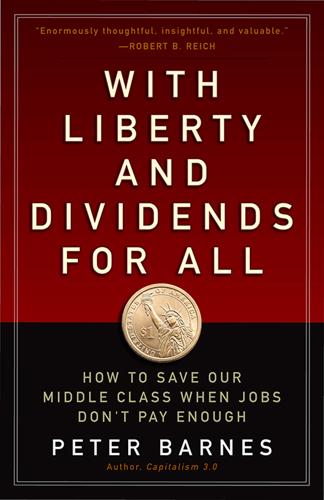
With Liberty and Dividends for All: How to Save Our Middle Class When Jobs Don't Pay Enough
by
Peter Barnes
Published 31 Jul 2014
Edwin Amenta, When Movements Matter: The Townsend Plan and the Rise of Social Security (Princeton, NJ: Princeton University Press, 2006). 22. Nicholas Lemann, “When the earth moved: What happened to the environmental movement?” New Yorker, April 15, 2013. 23. Tyler Cowen, Average Is Over: Powering America Beyond the Age of the Great Stagnation (New York: Dutton, 2013), 229—30 (Kindle Edition). Appendix: The Dividend Potential of Co-owned Wealth 1. Assumes 95 percent of US residents are eligible for Social Security and a 2013 population of 316 million; http://www.census.gov/population/foreign/data/acs2003.html. 2.
…
IN THE PAST, EACH GENERATION of Americans believed it would live better than the one that came before it. That’s what we meant by “progress.” But though we continue to advance in technological ways, we’re no longer progressing in intergenerational betterment. That part of the American dream has died. Perhaps it can’t be saved, and we should just accept that fact. That’s what economist Tyler Cowen argues in his 2013 book, Average Is Over. Twenty-first-century America will be “much more unfair and much less equal,” he says. About ten percent of Americans will be wealthy while the rest grow increasingly poor. Aid from government will be inadequate, and millions will live in shantytowns like those in Mexico and Brazil.
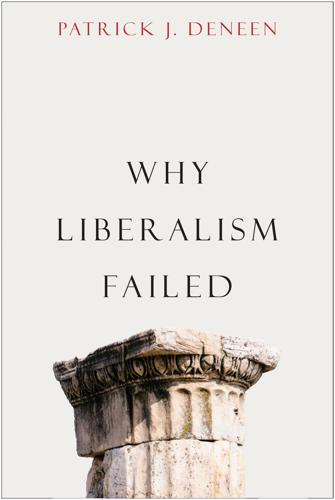
Why Liberalism Failed
by
Patrick J. Deneen
Published 9 Jan 2018
Wendell Berry, “Faustian Economics: Hell Hath No Limits,” Harper’s, May 2008, 37–38. CHAPTER 6. THE NEW ARISTOCRACY 1. Murray, Coming Apart. 2. Locke, Second Treatise of Government, 23, 26. 3. F. A. Hayek, The Constitution of Liberty, ed. Ronald Hamowy (Chicago: University of Chicago Press, 2011), 96. 4. Ibid., 95–96. 5. Tyler Cowen, Average Is Over: Powering America Past the Age of the Great Stagnation (New York: Dutton, 2013), 258. 6. Ibid. 7. John Stuart Mill, On Liberty, in Gray, On Liberty and Other Essays, 12–13. 8. Ibid., 65. 9. Ibid., 67. 10. Ibid., 68. 11. Ibid., 72. 12. Edmund Burke, Reflections on the Revolution in France, ed. J. G. A. Pocock (Indianapolis: Hackett, 1987), 76. 13.
…
This recognition has led to a return of Locke’s basic wager that a system that provided material comfort, no matter the vastness of inequality and absent likely prospects of growth and mobility between classes, would nevertheless satisfy most members of society. The most recent muse of Lockean liberalism is the economist Tyler Cowen, whose book Average Is Over echoes the basic contours of Locke’s argument. While noting that liberalism and market capitalism perpetuate titanic and permanent forms of inequality that might have made dukes and earls of old blush, Cowen argues that we are at the end of a unique period in American history, a time of widespread belief in relative equality and shared civic fate, and entering an age in which we will effectively see the creation of two separate nations.
…
Cavanaugh, William T. “‘Killing for the Telephone Company’: Why the Nation-State Is Not the Keeper of the Common Good.” In Migrations of the Holy: God, State, and the Political Meaning of the Church. Grand Rapids, MI: Eerdmans, 2011. Cowen, Tyler. Average Is Over: Powering America Past the Age of the Great Stagnation. New York: Dutton, 2013. Crawford, Matthew. Shop Class as Soul Craft: An Inquiry into the Value of Work. New York: Penguin, 2010. Croly, Herbert. The Promise of American Life. 1909; Cambridge: Harvard University Press, 1965. Deneen, Patrick. “Against Great Books: Questioning our Approach to the Western Canon.”

The Economic Singularity: Artificial Intelligence and the Death of Capitalism
by
Calum Chace
Published 17 Jul 2016
He argues that prediction markets give us a financial stake in being accurate when we make forecasts, rather than just trying to look good to our peers. Tyler Cowen A professor at George Mason University and co-author of an extremely popular blog, Tyler Cowen was New Jersey's youngest ever chess champion. He is a man with prodigiously broad knowledge and interests, and although he proposes some key ideas forcefully, there is always some nuance, and he dislikes simplistic and modish solutions. In two recent books, “the Great Stagnation” (2011) and “Average is Over” (2014), he paints a picture of America's future which is slightly depressing, but not apocalyptic.
…
Humans can undermine the game of a computer by throwing in some surprise moves which don't make much sense in the short term, or by deploying an intuitive strategy. Matches between humans working with computers are called advanced chess, or centaur chess. Kasparov himself initiated the first high-level centaur chess competition in Leon, in Spain, in 1998, and competitions have been held there regularly ever since. Tyler Cowen (one of the sceptics about machine automation that we met in chapter 3.3) explores this form of chess extensively in his book, “Average is Over”. Some people believe this phenomenon of humans teaming up with computers to form centaurs is a metaphor for how we can avoid most jobs being automated by machine intelligence.
…
They think that capitalism should be defended and retained, but they sound less confident about what will happen in the medium term. They argue for an overhaul of the US education system, but they don’t sound convinced that will be enough, and they speculate that a negative income tax may eventually become necessary. Tyler Cowen, whom we encountered in chapter 3.3 as the author of “Average is Over”, is certainly not breezy in his assessment of the outlook, nor is he tentative. He is confident that UBI will not be needed, and he does not expect riots. But his prognosis is lugubrious. He foresees 10-15% of the population being extremely wealthy, and the rest getting by on incomes which are stagnant at best, but putting up with it because many of them are too old to riot, and they are pacified by the excellent cheap entertainment that technology provides.

The Internet Is Not the Answer
by
Andrew Keen
Published 5 Jan 2015
Solow, “We’d Better Watch Out,” New York Times Book Review, July 12, 1987. 74 Timothy Noah, The Great Divergence: America’s Growing Inequality Crisis and What We Can Do About It (New York: Bloomsbury, 2012), p. 7. 75 Eduardo Porter, “Tech Leaps, Job Losses and Rising Inequality,” New York Times, April 15, 2014. 76 Loukas Karabarbounis and Brent Neiman, “The Global Decline of Labor Share,” Quarterly Journal of Economics, 2014. 77 Thomas B. Edsall, “The Downward Ramp,” New York Times, June 10, 2014. 78 Tyler Cowen, Average Is Over: Powering America Beyond the Age of the Great Stagnation (New York: Dutton, 2013), p. 53. 79 Ibid., p. 229. 80 Ibid., pp. 198–200. 81 Joel Kotkin, “California’s New Feudalism Benefits a Few at the Expense of the Multitude,” Daily Beast, October 5, 2013. 82 Paul Krugman, “Sympathy for the Luddites,” New York Times, June 13, 2013, nytimes.com/2013/06/14/opinion/krugman-sympathy-for-the-luddites.html?
…
Bradford DeLong has suggested that the more central a role information technology plays in traditionally skillful professions like law or medicine, the fewer jobs there might be.75 Loukas Karabarbounis and Brent Neiman, two economists from the University of Chicago’s business school, have found that since the mid-1970s, the relative amount of income going to workers has been in decline around the world.76 Meanwhile the research of three Canadian economists, Paul Beaudry, David Green, and Benjamin Sand, found a similarly steep decline of midlevel jobs—a depressing development that MIT’s David Autor, Northeastern University’s Andrew Sum, and the president of the Economic Policy Institute, Larry Mishel, have also discovered with their research.77 Many others share this concern about the destructive impact of technology on the “golden age” of labor. The George Mason University economist Tyler Cowen, in his 2013 book, Average Is Over, concurs, arguing that today’s big economic “divide” is between those whose skills “complement the computer” and those whose don’t. Cowan underlines the “stunning truth” that wages for men, over the last forty years, have fallen by 28%.78 He describes the divide in what he calls this new “hyper-meritocracy” as being between “billionaires” like the Battery member Sean Parker and the homeless “beggars” on the streets of San Francisco, and sees an economy in which “10 to 15 percent of the citizenry is extremely wealthy and has fantastically comfortable and stimulating lives.”79 Supporting many of Frank and Cook’s theses in their Winner-Take-All Society, Cowen suggests that the network lends itself to a superstar economy of “charismatic” teachers, lawyers, doctors, and other “prodigies” who will have feudal retinues of followers working for them.80 But, Cowen reassures us, there will be lots of jobs for “maids, chauffeurs and gardeners” who can “serve” wealthy entrepreneurs like his fellow chess enthusiast Peter Thiel.
…
In our digital age, the personal is the economic. And there’s nothing liberating about it at all. Just as the Kodak tragedy decimated the economic heart of Rochester, so the Internet is destroying our old industrial economy—transforming what was once a relatively egalitarian system into a winner-take-all economy of what Tyler Cowen calls “billionaires and beggars.” Rather than just a city, it’s a whole economy that is losing its center. For all Silicon Valley’s claims that the Internet has created more equal opportunity and distribution of wealth, the new economy actually resembles a donut—with a gaping hole in the middle where, in the old industrial system, millions of workers were once paid to manufacture valuable products.
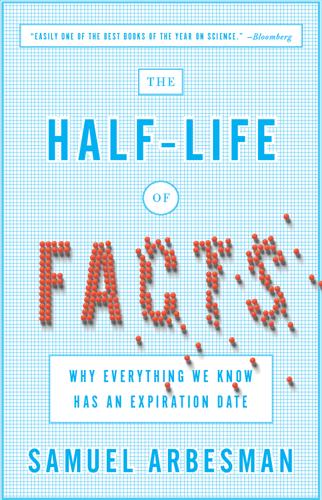
The Half-Life of Facts: Why Everything We Know Has an Expiration Date
by
Samuel Arbesman
Published 31 Aug 2012
[The Half-Life of Facts] does what popular science should do—both engages and entertains.” —Kirkus Reviews “A fascinating and necessary look at the pace of human knowledge.” —Maria Popova, Brain Pickings “What does it mean to live in a world drowning in facts? Consider The Half-Life of Facts the new go-to book on the evolution of science and technology.” —Tyler Cowen, professor of economics, George Mason University, author of An Economist Gets Lunch “The Half-Life of Facts is fun and fascinating, filled with wide-ranging stories and subtle insights about how facts are born, dance their dance, and die. In today’s world where knowledge often changes faster than we do, Sam Arbesman’s new book is essential reading.”
…
For example, the sizes of asteroids discovered annually get 2.5 percent smaller each year. In the first few years, the ease of discovery drops off quickly; after early researchers pick the low-hanging fruit, it continues to “decay” for a long time, becoming slightly harder without ever quite becoming impossible. There is even a similarity in one view of medicine. As Tyler Cowen, an economist at George Mason University, has noted, if you tally the number of major advances, or definitive moments, in modern medicine (as chronicled by James Le Fanu) in each decade of the middle of the twentieth century, you get an eventual decline: “In the 1940s there are six such moments, seven moments in the 1950s, six moments in the 1960s, a moment in 1970 and 1971 each, and from 1973 [to] 1998, a twenty-five-year period, there are only seven moments in total.”
…
PLoS Computational Biology 7, no. 6 (June 2011): e1002072. 22 the sizes of asteroids discovered annually: More precisely, the dates used were for multi-opposition observations, required for a high level of accuracy of computing orbits. The date of discovery is a less stringent threshold when it comes to asteroids, so this analysis simply uses a more stringent criterion. 23 “In the 1940s there are six such moments”: Cowen, Tyler. “The Great Stagnation in Medicine.” Marginal Revolution, 2011. www.marginalrevolution.com/marginalrevolution/2011/02/the-great-stagnation-in-medicine.xhtml. 23 a Swedish medical student named Ivar Sandström: Carney, J. Aidan. “The Glandulae Parathyroideae of Ivar Sandström: Contributions from Two Continents.” American Journal of Surgical Pathology 20, no. 9 (1996): 1123–44. 24 if you uttered the statement: Price.
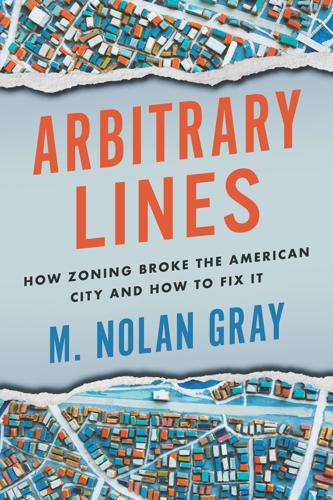
Arbitrary Lines: How Zoning Broke the American City and How to Fix It
by
M. Nolan Gray
Published 20 Jun 2022
Emily Badger, “Covid Didn’t Kill Cities. Why Was That Prophecy So Alluring?” New York Times, July 12, 2021, https://www.nytimes.com/2021/07/12/upshot/covid-cities-predictions-wrong.html. 18. For a comprehensive treatment of the issue of US economic stagnation, the reader is encouraged to see Tyler Cowen, The Great Stagnation: How America Ate All the Low-Hanging Fruit of Modern History, Got Sick, and Will (Eventually) Feel Better (Boston: Dutton, 2011). Real wage growth data from the Bureau of Labor Statistics. For more on the productivity slowdown, see Robert J. Godon, “Is U.S. Economic Growth Over? Faltering Innovation Confronts the Six Headwinds,” NBER Working Paper Series (August 2012).
…
On the contrary, as part II argues, despite its seemingly limited scope, zoning has had a destructive effect on cities, which is why we should abolish it. Acknowledgments Like any work worthy of your time, this book is the result of many minds—I simply have the honor of putting my name on the cover. In late 2019, I sent Tyler Cowen a grant proposal setting out my plan to spend 2020 cranking out blog posts and writing research papers. Since I knew he was interested in moonshot ideas, I tacked on one or two lines about a peculiar little book critiquing an obscure area of policy. Within forty-eight hours, I was on the phone with Tyler sketching out the contours of the book you now hold in your hands.
…
Gilles Duranton and Diego Puga, “Urban Growth and Its Aggregate Implications,” NBER Working Paper Series (December 2019), https://www.nber.org/system/files/working_papers/w26591/w26591.pdf. 25. Peter Ganong and Daniel W. Shoag, “Why Has Regional Income Convergence in the U.S. Declined?” NBER Working Paper Series (July 2017), https://www.nber.org/papers/w23609. 26. For a robust defense of growth, see Tyler Cowen, Stubborn Attachments: A Vision for a Society of Free, Prosperous, and Responsible Individuals (San Francisco: Stripe Press, 2018). CHAPTER 5: APARTHEID BY ANOTHER NAME 1. Larry Buchanan, Quotrung Bui, and Jugal K. Patel, “Black Lives Matter May Be the Largest Movement in U.S. History,” New York Times, July 3, 2020, https://www.nytimes.com/interactive/2020/07/03/us/george-floyd-protests-crowd-size.html. 2.
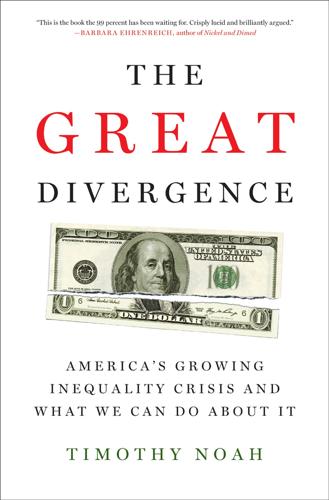
The Great Divergence: America's Growing Inequality Crisis and What We Can Do About It
by
Timothy Noah
Published 23 Apr 2012
Brooks, The Battle: How the Fight Between Free Enterprise and Government Will Shape America’s Future (New York: Basic Books, 2010). Matthew Continetti, “About Inequality,” Weekly Standard, Nov. 14, 2011, at http://www.weeklystandard.com/articles/about-inequality_607779.html?page=1. Tyler Cowen, The Great Stagnation: How America Ate All the Low-Hanging Fruit of Modern History, Got Sick, and Will (Eventually) Feel Better (New York: Dutton, 2011). ———“The Inequality That Matters,” American Interest 6, no. 3 (Jan.–Feb. 2011), at http://www.the-american-interest.com/article.cfm?piece=907. Barbara Ehrenreich, Nickel and Dimed: On (Not) Getting By in America (New York: Metropolitan Books, 2001).
…
Morgan never had access to sulfa drugs or iPhones or fresh vegetables in wintertime. And the gap between Morgan’s quality of life and that of the typical American during his lifetime was in many important ways larger than the gap today between Bill Gates’s quality of life and that of the typical American. In Morgan’s day, as the George Mason economist Tyler Cowen puts it, “the average person had little formal education, worked six days a week or more, often at hard physical labor, never took vacations, and could not access most of the world’s culture.” But people do not experience life as an interesting moment in the evolution of human living standards.
…
Currently forty states provide funding to expand preschool education, though most limit enrollment to low-income families. Nationally, 27 percent of all four-year-olds are enrolled in pre-K programs. That’s roughly equivalent to the number of fourteen-to seventeen-year-olds that were enrolled in high school during the late teens of the previous century. This might be the pool of “smart, uneducated kids” that Tyler Cowen is looking for—“low-hanging fruit” from whom we can derive future productivity gains merely by putting them in school. Research on early education suggests the benefits could be considerable. A 2011 study by the Harvard economist Raj Chetty and five others (including Berkeley’s Emmanuel Saez) found that a one-percentile increase in scores on tests administered to Tennessee kindergarteners at the end of the school year was associated with a $94 increase in annual wages at age twenty-seven—and that’s after the numbers were adjusted to take into account variations in family background.
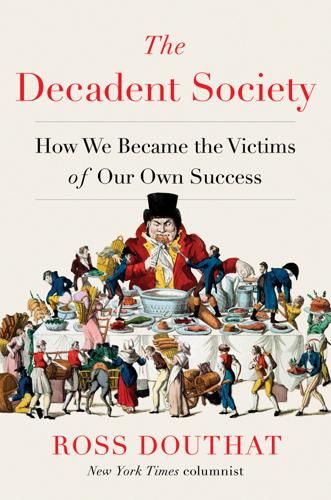
The Decadent Society: How We Became the Victims of Our Own Success
by
Ross Douthat
Published 25 Feb 2020
For all the many transatlantic differences, our basic economic experience is the same: persistent stagnation, chronic disappointment, and a growing conflict between the promise of progress and a reality where everything seems—surprisingly, depressingly—to stay the same. The Limits of Neoliberalism There is no shortage of theories to explain this “great stagnation” (to borrow a phrase from one of the theorizers, the George Mason University economist Tyler Cowen), and there is also no need to simply choose between them. Like most broad trends, the economic decadence of the developed world is overdetermined, and almost every serious attempt at explanation will contain some element of truth. The most politically appealing theories—the ones animating our populist and socialist insurgencies—tend to blame neoliberalism itself, claiming that the medicine for 1970s stagflation has proven to be poison in large doses.
…
Since the 2008 financial crisis and the Great Recession exposed almost a decade’s worth of Western growth as an illusion, a diverse cast of economists and political scientists and other figures on both the left and the right have begun to talk about stagnation and repetition and complacency and sclerosis as defining features of this Western age: Tyler Cowen and Robert Gordon, Thomas Piketty and Francis Fukuyama, David Graeber and Peter Thiel, and many others. This book is, in part, an attempt to synthesize their various perspectives into a compelling account of our situation. But it also weaves the social sciences together with observations on our intellectual climate, our popular culture, our religious moment, our technological pastimes, in the hopes of painting a fuller portrait of our decadence than you can get just looking at political science papers on institutional decay or an economic analysis of the declining rate of growth.
…
For the pessimists, the unusual features of the post-2007 landscape—the persistently low interest rates, the low rate of inflation, the disappointing rate of growth, the great fortunes parked in rent-seeking rather than risk-taking—are actually inevitabilities in a developed world where there just aren’t enough impressive enterprises to invest in; a developed world that inflates bubbles and then pops them (or invests in Theranos and then repents) because that’s all there is for capital to do; a developed world slowly growing accustomed to unexpected limits on its future possibilities. The most convincing theorists of limits include Cowen, in his 2011 book The Great Stagnation: How America Ate All the Low-Hanging Fruit of Modern History, Got Sick, and Will (Eventually) Feel Better, and his fellow economist Robert Gordon, in his magisterial 2016 work, The Rise and Fall of American Growth: The U.S. Standard of Living Since the Civil War. Both authors would agree with portions of the arguments I’ve just sketched about neoliberalism pushed too far or misapplied, and an economy stalled by inequality or captured by a self-dealing upper class.

Capitalism Without Capital: The Rise of the Intangible Economy
by
Jonathan Haskel
and
Stian Westlake
Published 7 Nov 2017
This coincidence of very cheap borrowing and the apparent unwillingness of businesses to invest was what Larry Summers was talking about when he popularized the term “secular stagnation” in a 2013 lecture to the IMF.1 One immediate explanation for this weird mix of cheap money and low investment is simply that the demand for investment has fallen. In his 2011 bestseller The Great Stagnation, economist Tyler Cowen suggested that developed countries might have exhausted easy sources of good investments, such as settling new land or getting children to spend more years in education. Most memorably, he argued that technological progress might have slowed down, or, more specifically, that the economic benefit of new discoveries was less than had been the case in the past.
…
Paying for citizens to go to school for longer was, for much of twentieth century, an important way that governments increased productivity; the economists Claudia Goldin and Lawrence Katz documented the vital role of education in the economic growth of the United States, pointing out, for example, that while 62 percent of the 1930 US birth cohort graduated from high school, 85 percent of the 1975 cohort did (Goldin and Katz 2008). Robert Gordon and Tyler Cowen have argued that there are diminishing returns here—children and young people can only spend so long in school or college—and that this will prove to be a major brake on US economic growth in the future (Gordon 2016; Cowen 2011). Working out how to defy these diminishing returns has proved challenging.
…
University of Chicago Press. ———. 2009. “Intangible Capital and U.S. Economic Growth.” Review of Income and Wealth 55 (3): 661–85. Corrado, Carol A., M. O’Mahony, and Lea Samek. 2015. “Measuring Education Services as Intangible Social Infrastructure.” SPINTAN Working Paper Series, No. 19. Cowen, Tyler. 2011. The Great Stagnation: How America Ate All the Low-Hanging Fruit of Modern History, Got Sick, and Will (Eventually) Feel Better. Penguin eSpecial from Dutton. CQ Researcher. 2016. “The Iron and Steel Industry.” http://library.cqpress.com/cqresearcher/document.php?id=cqresrre1930050100. Crawford, Rowena, Dave Innes, and Cormac O’Dea. 2016.
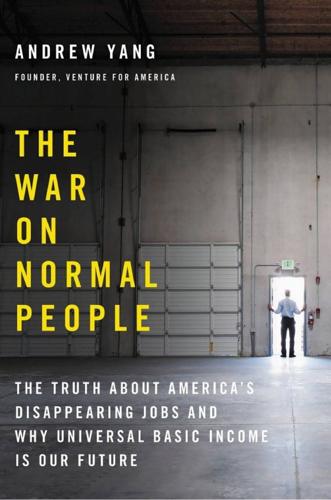
The War on Normal People: The Truth About America's Disappearing Jobs and Why Universal Basic Income Is Our Future
by
Andrew Yang
Published 2 Apr 2018
…“a major metropolitan area run by armed teenagers with no access to jobs or healthy food”…: Matt Taibbi, “Apocalypse, New Jersey: A Dispatch from America’s Most Desperate Town,” Rolling Stone, December 11, 2013. … since 1970 the difference between the most and least educated U.S. cities has doubled…: Tyler Cowen, Average Is Over: Powering America beyond the Age of the Great Stagnation (New York: Penguin Books, 2013), pp. 172–173. Fifty-nine percent of American counties saw more businesses close than open…: “Dynamism in Retreat: Consequences for Regions, Markets and Workers,” Economic Innovation Group, February 2017. California, New York, and Massachusetts accounted for 75 percent of venture capital in 2016…: Richard Florida, “A Closer Look at the Geography of Venture Capital in the U.S.”
…
Relocating is a significant life change—moving away from friends and family requires significant courage, adaptability, and optimism. Imagine living somewhere where your best people always leave, where the purpose of excelling seems to be to head off to greener pastures. Over time it would be easy to develop a negative outlook. You might double down on pride and insularity. The economist Tyler Cowen observed that since 1970 the difference between the most and least educated U.S. cities has doubled in terms of average level of education—that is, more and more educated people are congregating in the same cities and leaving others. Business dynamism is now vastly unevenly distributed. Fifty-nine percent of American counties saw more businesses close than open between 2010 and 2014.
…
The Annual Time Use survey in 2014 indicated high levels of time spent “attending gambling establishments,” “tobacco and drug use,” “listening to the radio,” and “arts and crafts as a hobby,” with over 8 hours per day spent on “socializing, relaxing and leisure.” The same surveys showed lower likelihood of volunteering or attending religious services than for men in the workforce, despite having considerably more time. “Every society has a ‘bad men’ problem,” says Tyler Cowen, the economist and author of Average Is Over. He projects a future where a relative handful of high-productivity individuals create most of the value, while low-skilled people become preoccupied with cheap digital entertainment to stay happy and organize their lives. Games have come a long way since I was a kid, and they’re about to take yet another leap forward.

The New Class Conflict
by
Joel Kotkin
Published 31 Aug 2014
Rich Morin and Seth Motel, “A Third of Americans Now Say They Are in the Lower Classes,” Pew Research Social & Demographic Trends, September 10, 2012, http://www.pewsocialtrends.org/2012/09/10/a-third-of-americans-now-say-they-are-in-the-lower-classes. 49. Brownstein, “Eclipsed.” 50. Tyler Cowen, Average is Over: Powering America Beyond the Age of the Great Stagnation (New York: Dutton, 2013), pp. 23–24. 51. Ibid., p. 36; D. Robert Worley, “In Defense of Conservative Thought,” Huffington Post, September 18, 2012, http://www.huffingtonpost.com/d-robert-worley/conservatives-progressives_b_1879200.html. 52. Sustainable Silicon Valley (website), http://www.sustainablesv.org. 53.
…
The hardening of class lines, and the growing concentration of disposable income, sends signals through everything from the political economy to consumer culture. Many theorists, both on the right and the left, suggest the time has come to accept a more stratified, less permeable social order. Conservatives and libertarians, such as economist Tyler Cowen, argue that “average” intelligence and skills are no longer sufficient for social advance. Some 15 percent of the population may do very well, he argues, but the vast majority will have to accept limited prospects for themselves and their offspring. The prospect he lays out essentially recalls the hierarchies of the Middle Ages, or at best the Victorian era.
…
Blue-collar workers were described in major media as “bitter” and “psychologically scarred,” and even as an “endangered species.” Americans, noted one economist, suffered a “recession,” but those with blue collars endured a “depression.”26 This perspective extends across ideological lines. Libertarian economist Tyler Cowen suggests that an “average” skilled worker can expect to subsist on little but rice and beans in the future U.S. economy. If they choose to live on the East or West Coast, they may never be able to buy a house and will remain marginal renters for life.27 Left-leaning Slate in 2012 declared that manufacturing and construction jobs, sectors that powered the Yeomanry’s upward mobility in the past, “aren’t coming back.”28 Rather than a republic of Yeoman, we could end up instead, as one left-wing writer put it, living at the sufferance of our “robot overlords,” as well as those who program and manufacture them, likely using other robots to do so.29 Contempt for the middle orders is often barely concealed among those most comfortably ensconced in the emerging class order.
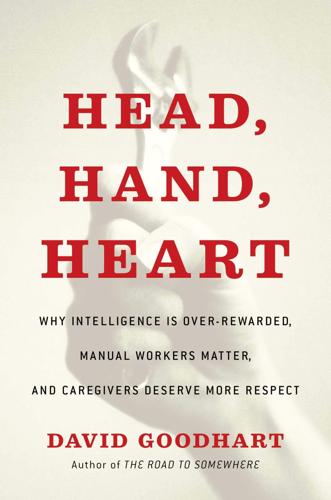
Head, Hand, Heart: Why Intelligence Is Over-Rewarded, Manual Workers Matter, and Caregivers Deserve More Respect
by
David Goodhart
Published 7 Sep 2020
Total employment in the giant mobile phone, software and Internet companies which dominate global equity values is a minute drop in the global labour market. Facebook, with a market capitalization of $500 billion, employs just 25,000 people.45 Turner takes issue with Tyler Cowen’s book Average Is Over: Powering America Beyond the Age of the Great Stagnation in which he argues that rising income inequality is inevitable but will not lead to social revolt, because low earners will still enjoy adequate living standards as long as housing costs are kept low. Cowen imagines a future in which “say 10 to 15 per cent of the citizenry is extremely wealthy and has fantastically comfortable and stimulating lives” while “much of the rest of the country will have stagnant or maybe falling wages in dollar terms, but a lot more opportunities for cheap fun and cheap education” because of the free or near free services that the Internet makes available.46 The average citizen will not be able to afford to live well in the successful big cities… but will migrate to those parts of the United States, such as Texas, where plentiful land and easy zoning rules make housing affordable.
…
Goldthorpe, Social Mobility and Education in Britain: Research, Politics and Policy (Cambridge, UK: Cambridge University Press, 2018). 38 John Boys, CIPD, private correspondence using ONS Dataset EMP04: “Employment by Occupation.” 39 Jacques Bughin, Eric Hazan, Susan Lund et al., Skills Shift: Automation and the Future of the Workforce, McKinsey Global Institute (MGI) Discussion Paper, May 2018. 40 Ibid. 41 Ibid. 42 “EY Transforms Its Recruitment Selection Process for Graduates, Undergraduates and School Leavers,” press release from Ernst and Young, August 3, 2015. 43 “EY: How to Excel in a Strengths-Based Graduate Interview,” Target Jobs, https://targetjobs.co.uk/employers/ey/ey-how-to-excel-in-a-strengths-based-graduate-interview-323859. 44 See UK High Pay Centre. 45 Adair Turner, Capitalism in the Age of Robots: Work, Income and Wealth in the 21st Century, Lecture given at the School of Advanced International Studies, John Hopkins University, April 10, 2018, 29. 46 Tyler Cowen, Average Is Over: Powering America Beyond the Age of the Great Stagnation (New York: Dutton, 2013). Chapter Ten: Cognitive Diversity and the Future of Everything 1 David Brooks, Intelligence Squared lecture, October 20, 2015. 2 Iain McGilchrist, The Master and His Emissary: The Divided Brain and the Making of the Western World (New Haven, CT: Yale University Press, 2009). 3 Jonathan Rowson and Iain McGilchrist, Divided Brain, Divided World: Why the Best Part of Us Struggles to be Heard, RSA, February 2013, 4–5, https://www.thersa.org/globalassets/pdfs/blogs/rsa-divided-brain-divided-world.pdf. 4 Richard Layard, Can We Be Happier?
…
Cavendish, Camilla, Extra Time: 10 Lessons for an Ageing World (London: HarperCollins, 2019). Christodoulou, Daisy, Seven Myths About Education (London: Routledge, 2014). Collier, Paul, The Future of Capitalism: Facing the New Anxieties (London: Allen Lane, 2018). Cowen, Tyler, Average Is Over: Powering America Beyond the Age of the Great Stagnation (New York: Dutton, 2013). Crawford, Matthew, The Case for Working with Your Hands: Or Why Office Work Is Bad for Us and Fixing Things Feels Good (London: Penguin, 2011). Deaton, Angus, “Why is Democratic Capitalism Failing So Many People?” The Tri-Nuffield Conference lecture (June 2019). Dench, Geoff (ed.), The Rise and Rise of Meritocracy (Oxford: Blackwell Publishing, 2006). ———.

The Innovation Illusion: How So Little Is Created by So Many Working So Hard
by
Fredrik Erixon
and
Bjorn Weigel
Published 3 Oct 2016
Much of the recent literature on corporate governance, business development, and strategy that we have read has felt like a copy of the original thought derived from the works of Peter Drucker, Michael Porter, Henry Minzberg, Philip Kotler, and Igor Ansoff. There are several thinkers today that can be put in the same category. If you get bored by all those who just repeat the conventional wisdom about the economy and how it evolves, pick any work from these economic thinkers and you will immediately be reinvigorated: David Autor, Tyler Cowen, Deirdre McCloskey, Malcolm Gladwell, David Graeber, Deepak Lal, Joel Mokyr, Matt Ridley, Richard Sennett, Robert Solow, Lawrence Summers, Peter Thiel, and Martin Wolf. Their works have contributed to our thinking for this book. Likewise, there are many successful investors and entrepreneurs whose thinking about innovation and business creation have inspired us.
…
Between 1995 and 2009, Europe’s labor productivity grew by just 1 percent annually.13 Figure 2.3 G7 labour productivity growth Like the United States, the other G7 countries seem to have exhausted the usual sources of productivity growth, especially the growth from the first (1760–1840) and second (1870–1970) industrial revolutions. That tallies with economist Tyler Cowen’s catchy summary of declining strength in the American economy, that it has “eaten all the low-hanging fruits of modern history and got sick.”14 Translated into economic prose, this means that new technologies do not create much economic growth, or at least are not making as large a contribution as in the past.
…
The actual rates of TFP growth in 2010–13 are smaller. 12.Gordon, “Is US Economic Growth Over?” offers a condensed version of Gordon’s productivity analysis. The full analysis of US living standards is in Gordon, The Rise and Fall of American Growth. 13.Gill and Raiser, Golden Growth, 12, fig. 5. 14.Cowen, The Great Stagnation. 15.OECD, “The Future of Productivity.” 16.Pellegrino and Zingales, “Diagnosing the Italian Disease.” 17.Altomonte et al., “Assessing Competitiveness.” 18.Navaretti et al., “The Global Operations of European Firms.” 19.Zingales, A Capitalism for the People, 5. 20.Leung and Rispoli, “The Distribution of Gross Domestic Product.” 21.Cardarelli and Lusinyan, “US Total Factor Productivity Slowdown.” 22.van der Marel, “The Importance of Complementary Policy.” 23.Cette, Fernald, and Mojon, “The Pre-Global-Financial-Crisis Slowdown.” 24.OECD, Skills Outlook 2013. 25.Base and Svioska, “Productivity Growth.” 26.McGowan and Andrews, “Labour Market Mismatch and Labour Productivity.” 27.Browne, “S&P 500 Firms Hoard Cash as CAPEX Declines.” 28.Krantz, “$194B!
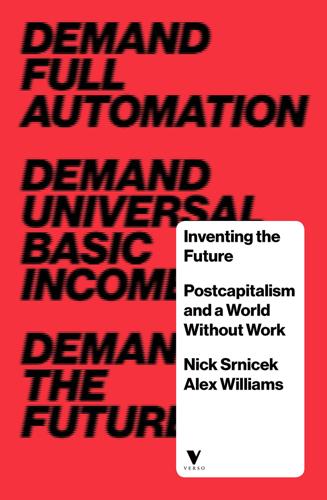
Inventing the Future: Postcapitalism and a World Without Work
by
Nick Srnicek
and
Alex Williams
Published 1 Oct 2015
Faltering Innovation Confronts the Six Headwinds, Working Paper, National Bureau of Economic Research, August 2012, at nber.org; Lawrence Summers, ‘US Economic Prospects: Secular Stagnation, Hysteresis, and the Zero Lower Bound’, Business Economics 49: 2 (2014); Tyler Cowen, The Great Stagnation: How America Ate All the Low-Hanging Fruit of Modern History, Got Sick, and Will (Eventually) Feel Better (New York: Dutton, 2011); Coen Teulings and Richard Baldwin, eds, Secular Stagnation: Facts, Causes and Cures (London: CEPR, 2014). 134.Cowen, Great Stagnation, pp. 47–8. 135.Thor Berger and Carl Benedikt Frey, Industrial Renewal in the 21st Century: Evidence from US Cities? (Oxford Martin School Working Paper, 2014). 136.Calculated based on data from: Bureau of Labor Statistics, ‘Table 1.
…
Brian Arthur, The Nature of Technology: What It Is and How It Evolves (London: Penguin, 2009). 10.Tony Smith, ‘Red Innovation’, Jacobin 17 (2015), p. 75. 11.Mariana Mazzucato, Erik Brynjolfsson and Michael Osborne, ‘Robot Panel’, presented at the FT Camp Alphaville, London, 15 July 2014, available at youtube.com. 12.Michael Hanlon, ‘The Golden Quarter’, Aeon Magazine, 3 December 2014, at aeon.co; Tyler Cowen, The Great Stagnation: How America Ate All the Low-Hanging Fruit of Modern History, Got Sick, and Will (Eventually) Feel Better (New York: Dutton, 2011), p. 13. 13.This is one of the primary conclusions of Mariana Mazzucato’s important book The Entrepreneurial State: Debunking Public vs. Private Sector Myths (London: Anthem, 2013). 14.For a lengthy analysis of how Apple cynically deployed state-developed technologies to build the iPhone, see ibid., Chapter 5. 15.The fact that so many megaprojects continue to go ahead despite their history of cost overruns and lack of profitability is deemed a paradox by one study: Bent Flyvbjerg, Nils Bruzelius and Werner Rothengatter, Megaprojects and Risk: An Anatomy of Ambition (Cambridge: Cambridge University Press, 2003), pp. 3–5. 16.André Gorz, Paths to Paradise: On the Liberation from Work, transl.

Rule of the Robots: How Artificial Intelligence Will Transform Everything
by
Martin Ford
Published 13 Sep 2021
The fact that all the remarkable progress in computing and the internet does not, by itself, measure up to the expectation that the kind of broad-based progress seen in earlier decades would continue unabated is captured in Peter Thiel’s famous quip that “we were promised flying cars and instead we got 140 characters.” The argument that we have been living in an age of relative stagnation—even as information technology has continued to accelerate—has been articulated at length by the economists Tyler Cowen, who published his book The Great Stagnation in 2011,64 and Robert Gordon, who sketches out a very pessimistic future for the United States in his 2016 book The Rise and Fall of American Growth.65 A key argument in both books is that the low-hanging fruit of technological innovation had been largely harvested by roughly the 1970s.
…
Darrell Etherington, “Waymo has now driven 10 billion autonomous miles in simulation,” TechCrunch, July 10, 2019, techcrunch.com/2019/07/10/waymo-has-now-driven-10-billion-autonomous-miles-in-simulation/. 62. Waymo website, accessed May 20, 2020, waymo.com/. 63. Ray Kurzweil, “The Law of Accelerating Returns,” Kurzweil Library Blog, March 7, 2001, www.kurzweilai.net/the-law-of-accelerating-returns. 64. Tyler Cowen, The Great Stagnation: How America Ate All the Low-Hanging Fruit of Modern History, Got Sick, and Will (Eventually) Feel Better, Dutton, 2011. 65. Robert J. Gordon, The Rise and Fall of American Growth: The U.S. Standard of Living Since the Civil War, Princeton University Press, 2016. 66. Nicholas Bloom, Charles I.

In Our Own Image: Savior or Destroyer? The History and Future of Artificial Intelligence
by
George Zarkadakis
Published 7 Mar 2016
Unlike the previous machine age of the first Industrial Revolution, the next one will not threaten manual blue-collar jobs, but those of highly paid, expert, white-collar workers. Doctors, lawyers, engineers, accountants, managers, designers, architects, are forecasted to become victims of computer automation. According to American economist Tyler Cowen, in the near future only an elite 10–15 per cent of the working population will have the intellectual capacity to master tomorrow’s AI technology, and that will make them very rich indeed.16 The rest of us will have to make do with low incomes and rather unfulfilling lives, or – at best – work as service providers to the rich.
…
This latter category of intelligent machines may in fact prove to be the majority, if not the rule. They will exhibit reclusive types of behaviour similar to some of those we presently associate with autism.24 These behaviours could be the result of social selection. In his book Average Is Over, Tyler Cowen argues that success in the twenty-first century is already becoming synonymous with the ability to work with computers. My personal experience within the IT industry and Internet start-ups has been that the most brilliant programmers are often very shy of other people and social interaction. Science and technology have become so competitive nowadays that success in these professions most often comes to those exhibiting high IQs and maximum dedication to the lab or the computer terminal.
…
Indeed, there may come a time when intelligent computers will be seen as the solution to all of humanity’s problems, including how to better govern ourselves. The end of liberty Most of the ideas, or warnings, offered today about the future effects of Artificial Intelligence point to the labour market. Several economists, such as Tyler Cowen, have argued that AI will cost many white-collar jobs. However, their analysis assumes that all other things will remain more or less equal, for instance our political system of parliamentary representation, or our free economies of prices mostly regulated by markets. But this is not necessarily so.
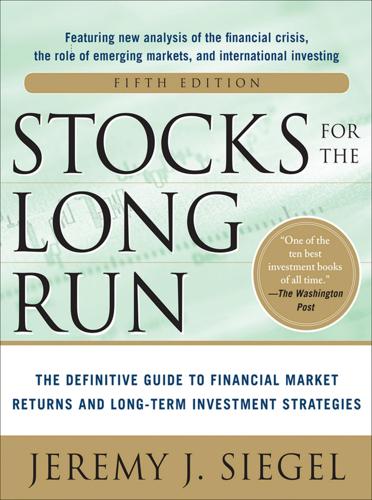
Stocks for the Long Run 5/E: the Definitive Guide to Financial Market Returns & Long-Term Investment Strategies
by
Jeremy Siegel
Published 7 Jan 2014
Except for the top 1 percent of the income distribution, Gordon predicts the vast majority of the U.S. population will experience growth of only 0.5 percent per year, less than one-quarter the long-term average. Others have echoed Professor Gordon’s pessimism and complain that discoveries today have not changed people’s lives as fundamentally as they did a century ago. Tyler Cowen, an economist at George Mason University and author of The Great Stagnation, has voiced his belief that the developed world is on a technological plateau and that all the low-hanging fruit has already been discovered.13 Indeed, look at Table 4-1. It shows the most important life-changing inventions of the past 100 years. Those that took place in the first half of that period appear far more important than those of the second half in transforming the life of the average individual.14 TABLE 4-1 Life-Changing Inventions of the Past 100 Years There are some in Silicon Valley who also believe that the United States is in a downtrend.
…
Robert Gordon, “Is U.S. Economic Growth Over? Faltering Innovation Confronts Six Headwinds,” NBER #18315, August 2012. For a rejoinder, see the response by John Cochrane of the University of Chicago in his blog at http://johnhcochrane.blogspot.com/2012/08/gordon-on-growth.html. 13. Tyler Cowen, The Great Stagnation: How America Ate All the Low-Hanging Fruit of Modern History, Got Sick, and Will (Eventually) Feel Better, New York: Dutton Adult, 2011. 14. These are not the dates when these items were discovered but when they became operational or widespread in the general population in the United States and most other advanced economies. 15.
…
Treasury bonds in, 23 Great Financial Crisis. See Financial crisis of 2008 Great Moderation, 23–24, 37 Great Recession crisis of 2008 and, 23 deflation in, 41 forecasting, 238 GDP in, 40 government budget deficits in, 57 Great Depression vs., 39–46, 56 real estate market in, 45 shareholder value in, 153 Great Stagnation ,69 Greenspan, Alan in 2008 financial crisis, 30–31, 36 on “irrational exuberance,” 14, 162 on rising stock market, 164 Greenwood Associates, 366 Gross, Bill, 16, 69 Gross domestic product (GDP). See GDP (gross domestic product) Gruber, Martin, 364 Gulf of Tonkin, 253–254 Guttenberg, Johannes, 70 Hall, Robert E., 232–233 Hamilton, Alexander, 91 Hamilton, William, 312 Harding, President Warren, 247 Hassett, Kevin, 16 Healthcare sector, 121–125, 205 Hedge funds, 17 Hedging against risk, 220–221, 282 Henry, Patrick, 75 HFTs (High-frequency traders), 297 High-frequency traders (HFTs), 297 Himmelberg, Charles, 29 Hiroshima, 253 History of aggregation bias, 161 of bond yields, 164–166 of book values, 166–168 of CAPE ratios, 162–164 of corporate profits, 166 of earnings yield, 159–162 of earnings yields, 164–166 of equity, 3–19 expectations and, 374 of Federal Reserve, 164–166, 213–214 of fundamentally weighted indexation, 371–372 of GDP, 166 of inflation, 209–210 of operating earnings, 150–152 of price/earnings ratios, 159–160 of profit margins, 168–169 of S&P 500, 119–120, 145–146 of stock market valuation, 157–169 of stock volatility, 300–303 of stocks as investments, 7–10 of tax code, 141–142 Holding on to losing trades, 347–349 Holding periods, 101–102 Holiday effect.
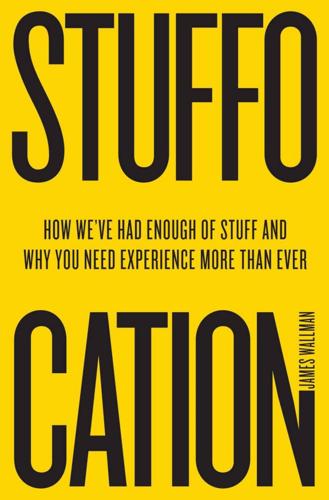
Stuffocation
by
James Wallman
Published 6 Dec 2013
For the definitive text on consuming fewer materials, read Chris Goodall, “Peak Stuff”, Carbon Commentary, 2011. And read Chris Goodall, Sustainability (London: Hodder & Stoughton, 2012). Keep up with the latest news via Goodall’s excellent blog www.carboncommentary.com. This chapter was also informed by Tyler Cowen, The Great Stagnation (New York: Dutton, 2011), and Robert J Gordon, “Is US Economic Growth Over? Faltering Innovation Confronts the Six Headwinds”, Centre for Economic Policy Research, September 2012. “In 2007, the average American bought almost twice as many items of clothing each year compared to 1991.
…
The tale of the average Palaeolithic woman comes from Geoffrey Miller, Spent: Sex, Evolution and the Secrets of Consumerism (New York: William Heinemann, 2009). For the rise of “clock-time” and what the Industrial Revolution did to our working week, read Benjamin Kline Hunnicutt’s works mentioned above. For more on threshold earners, see Tyler Cowen, “The Inequality That Matters”, The American Interest, January/February 2011. For an excellent deconstruction of that article, read political columnist Reihan Salam, “Threshold Earners and Gentleman Hackers”, National Review, 28 December 2010. “There is no sign of the ‘social snowball’ or ‘tipping point’ that would suggest that the medium chill is set to make the leap along the adoption curve.”

Only Humans Need Apply: Winners and Losers in the Age of Smart Machines
by
Thomas H. Davenport
and
Julia Kirby
Published 23 May 2016
John Maynard Keynes, Essays in Persuasion (New York: Norton, 1963), 358–73. 10. David H. Autor, “Polanyi’s Paradox and the Shape of Employment Growth,” prepared for the Federal Reserve Bank of Kansas City’s economic policy symposium on “Reevaluating Labor Market Dynamics,” September 3, 2014, http://economics.mit.edu/files/9835. 11. Tyler Cowen, Average Is Over: Powering America Beyond the Age of the Great Stagnation (New York: Dutton, 2013). 12. CareerSearch, “Career Advice on How to Become an Insurance Underwriter,” http://www.careersearch.com/careers/real-estate-and-insurance/insurance-underwriter/. 13. Mike Batty and Alice Kroll, “Automated Life Underwriting: A Survey of Life Insurance Utilization of Automated Underwriting Systems,” prepared for the Society of Actuaries, 2009, file:///C:/Users/jkirby/Downloads/research-life-auto-underwriting.pdf. 14.
…
Learning from Freestyle Chess Several writers who touch on what we are calling mutual augmentation do so with reference to chess. It’s definitely a realm in which some humility on the part of humans is called for. In one-on-one matches, we know the best chess players are computers these days. Yet the trouncing isn’t so complete as you might have been led to believe. The economist Tyler Cowen (not surprisingly, a chess champion in his youth) and The Second Machine Age authors Erik Brynjolfsson and Andrew McAfee use the example of “freestyle chess,” in which human chess players are free to use as much help from computers as they wish.11 The two of us personally don’t play chess much (we like to get paid for thinking that hard), but we gather that under these rules, people often manage to beat the best programs.
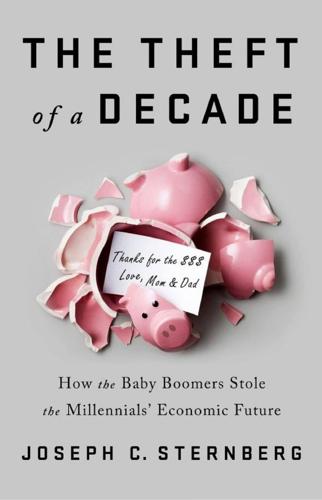
The Theft of a Decade: How the Baby Boomers Stole the Millennials' Economic Future
by
Joseph C. Sternberg
Published 13 May 2019
Richard Florida, “Preface to the Original Edition,” in The Rise of the Creative Class, Revisited (New York: Basic Books, 2012). 32. Erik Brynjolfsson and Andrew McAfee, The Second Machine Age: Work, Progress, and Prosperity in a Time of Brilliant Technologies (New York: Norton, 2014). 33. Tyler Cowen, Average Is Over: Powering America Beyond the Age of the Great Stagnation (New York: Plume, 2013). 34. Paul Beaudry, David A. Green, and Benjamin M. Sand, “The Great Reversal in the Demand for Skill and Cognitive Tasks,” National Bureau of Economic Research Working Paper No. 18901, March 2013. 35. Joseph G. Altonji, Lisa B. Kahn, and Jamin D.
…
More recently, Erik Brynjolfsson and Andrew McAfee’s influential 2014 book The Second Machine Age argued that the American economy inevitably will be characterized by a “bounty” of fabulous economic gains for workers and entrepreneurs with the right skills, but also a widening “spread” between those winners and the growing army of losers whose jobs will disappear under a tidal wave of technological change.32 That book won approving reviews or front-cover blurbs from public figures many Millennials have grown up respecting, such as New York Times columnist Thomas Friedman, Netscape founder Marc Andreessen, and someone whose job title is “chief maverick” at Wired magazine. Millennials to the Right end of the political spectrum who distrust those figures could instead turn to books like Average Is Over by free-market blogger and professor Tyler Cowen, who in 2013 presented a similar argument about the future of work, with a somewhat more dystopian twist: “I imagine a world where, say, 10 to 15 percent of the citizenry is extremely wealthy and has fantastically comfortable and stimulating lives, the equivalent of current-day millionaires, albeit with better health care.

Bourgeois Dignity: Why Economics Can't Explain the Modern World
by
Deirdre N. McCloskey
Published 15 Nov 2011
My Department of Economics at UIC was amiable toward my mixing of the humanities with the mathematical social sciences. And the two other departments from which I also recently retired at UIC, of English and of Communication, let me gladly learn and gladly teach the human sciences. Joel Mokyr, as I said, and Robert Wuetherick gave me astoundingly detailed and useful comments on this volume. Tyler Cowen and Jack Goldstone made helpful suggestions at a late stage. Jonathan Feinstein and Gregory Clark participated in an illuminating electronic discussion of Bourgeois Dignity at Cato Unbound, a blog of the Cato Institute, as did Matt Ridley, who has been cordially encouraging in other ways as well.
…
Yet if on account of Adam Smith’s hoped-for “universal opulence which extends itself to the lowest ranks of the people” all have access to excellent education—which is a proper subject for social policy—and if the poor are so rich (because the Great Enrichment) that they too have fewer children, which is the case, then the tendency to rising variance will be attenuated.12 The economist Tyler Cowen reminds me, further, that “low” birth rates also include zero children, which would make lines die out—as indeed they often did, even in royal families, well nourished. Nonexistent children, such as those of Grand Duke of Florence Gian Gastone de’ Medici in 1737, can’t inherit either financial or human capital.
…
Modern competition is described as the fight of all against all, but at the same time it is the fight of all for all.13 8 Or from the Right and Middle And there are doubts from the right, too. Some students of the economy, such as Robert Gordon, Lawrence Summers, Erik Brynjolfsson, Andrew McFee, Edmund Phelps, Edward E. Gordon, Jeffrey Sachs, Laurence Kotlikoff, and Tyler Cowen, have argued recently that countries in the position of the United States, on the frontier of betterment, are facing a slowdown, with a skill shortage, and that technological unemployment will be the result.1 Maybe. The economists would acknowledge that in the past couple of centuries numerous other learned commentators have predicted similar slowdowns—such as the Keynesian economists in the late 1930s and the 1940s, confident in their theory of “stagnationism”—only to find their predictions once again falsified by the continuing Great Enrichment.2 The classical economists of the first three-quarters of the nineteenth century, Marx included, expected landlords, or in Marx’s case capitalists, to engorge the national product.

Make Your Own Job: How the Entrepreneurial Work Ethic Exhausted America
by
Erik Baker
Published 13 Jan 2025
Summers, “The Age of Secular Stagnation: What It Is and What to Do about It,” Foreign Affairs 95, no. 2 (2016): 2–9. See also Summers, “Demand Side Secular Stagnation,” American Economic Review 105, no. 5 (2015): 60–65. 3Robert J. Gordon, The Rise and Fall of American Growth: The U.S. Standard of Living since the Civil War (Princeton, NJ: Princeton University Press, 2016); Tyler Cowen, The Great Stagnation: How America Ate All the Low-Hanging Fruit of Modern History, Got Sick, and Will (Eventually) Feel Better (New York: Dutton, 2011). 4Fredric Jameson, Representing Capital: A Reading of Volume One (London: Verso, 2011), 2. See also Robert Brenner, The Economics of Global Turbulence: The Advanced Capitalist Economies from Long Boom to Long Downturn, 1945-2005 (London: Verso, 2006); Tim Barker, “The Bleak Left,” n+1 28 (Spring 2017). 5David Fincher, dir., The Social Network, Sony Pictures, 2010. 6“Bernie Sanders on Small Business and Entrepreneurship,” FeeltheBern.org. 7Lucy Ford, “Air, Tetris, and the Ham-Fisted Capitalist Porn Trend in Cinema,” GQ UK, March 31, 2023. 8Dylan Croll, “Survey: GenZ May Be the Most Entrepreneurial of All Generations,” Yahoo Finance, July 16, 2023. 9Peter F.
…
Lawrence Summers, Clinton’s Treasury Secretary and one of the architects of the Obama administration’s response to the financial crisis, polished off the Depression-era concept of “secular stagnation” to diagnose an economy “stuck in neutral” due to a systemic, long-term excess of savings relative to investment, a downstream consequence of capital-saving innovation permitting rapid corporate growth without net investment.2 The Northwestern economic historian Robert J. Gordon made headlines in 2016 for asserting that the American economy had simply exhausted the pool of growth-enhancing innovations it was possible to develop—a thesis echoed but qualified by the libertarian economist Tyler Cowen, who insisted that only the “low-hanging fruit” have been plucked and capitalist ingenuity may prove to have more tricks still up its sleeve.3 Twenty-first-century Marxists, as well, have tended to sketch a picture of contemporary capitalism that emphasizes sluggishness and resource underutilization, in contrast to the rapacious dynamism accentuated in many past portraits.
…
On Koch’s Bircher milieu, see David Austin Walsh, “The Right-Wing Popular Front: The Far Right and American Conservatism in the 1950s,” Journal of American History 107, no. 2 (2020): 411–432. 49Thomas Petzinger Jr., “The Front Lines: Charles Koch Teaches Staff to Run a Firm Like a Free Nation,” Wall Street Journal, April 18, 1997. 501963 Freedom School pamphlet, box 2, folder 12, Walmart Research Materials; Mayer, Dark Money, 50–57. 51“Introducing Freedom School,” undated pamphlet, box 2, folder 12, Walmart Research Materials; “Executive Session: A Special Course for Executives at the Freedom School Can Provide a Boost to Your Company’s Economic Know-How,” 1963 brochure, box 2, folder 12, Walmart Research Materials. 52Charles G. Koch, The Science of Success: How Market-Based Management Built the World’s Largest Private Company (New York: Wiley, 2007); Wayne Gable and Jerry Ellig, Introduction to Market-Based Management (Fairfax, VA: Center for Market Processes, 1993), inside flap; Tyler Cowen and Jerry Ellig, “Market-Based Management at Koch Industries: Discovery, Dissemination, and Integration of Knowledge,” Competitive Intelligence Review 6, no. 4 (Winter 1995): 4–13; Charles Koch, “Empowering the Entrepreneur Within,” Chief Executive, March 1998, 46–49. On Koch and Mercatus, see Nancy MacLean, Democracy in Chains: The Deep History of the Radical Right’s Stealth Plan for America (New York: Viking, 2017). 53Koch, Science of Success, 71; Petzinger, “Front Lines.” 54Koch, Science of Success, 71, 112; Koch, “Entrepreneur Within,” 48.
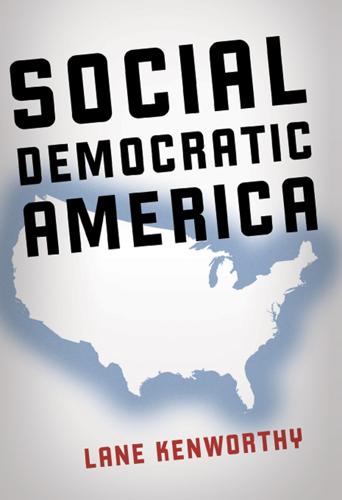
Social Democratic America
by
Lane Kenworthy
Published 3 Jan 2014
Moreover, even if productivity growth is sluggish in low-end services, it may, as Baumol himself points out, be rapid in other parts of the economy.44 Technological advance and improvements in work organization can yield leaps forward. The computer and communications revolutions already have generated considerable advance in manufacturing, finance, and an array of other services. They will soon do so in medicine, education, and elsewhere. In recent years, several analysts, including Robert Gordon and Tyler Cowen, have expressed pessimism about the likelihood of further productivity-enhancing innovations.45 The information technology revolution has largely run its course, they say, and in any case it never boosted productivity to the same degree as earlier innovations such as steam engines, railroads, electricity, the assembly line, indoor heating and air conditioning, running water, sewers, roads, and the internal combustion engine.
…
“Recent Trends in the Variability of Individual Earnings and Household Income.” Washington, DC. Congressional Budget Office (CBO). 2010. “Average Federal Tax Rates and Income, by Income Category, 1979–2007.” Washington, DC. CONSAD Research Corp. 2009. “An Analysis of Reasons for the Disparity in Wages Between Men and Women.” Pittsburgh. Cowen, Tyler. 2011. The Great Stagnation. New York: Penguin. Cox, W. Michael and Richard Alm. 1999. Myths of Rich and Poor. New York: Basic Books. Cramer, Reid and David Newville. 2009. “Children’s Savings Accounts.” Washington, DC: New America Foundation. Currie, Janet. 2006. The Invisible Safety Net. Princeton, NJ: Princeton University Press.

Capitalism in America: A History
by
Adrian Wooldridge
and
Alan Greenspan
Published 15 Oct 2018
Without America’s unwavering commitment to the Cold War, Joseph Stalin’s progeny might still be in power in Eastern Europe and perhaps much of Asia. Uncle Sam provided the arsenal of democracy that saved the twentieth century from ruin. This is a remarkable story. But it is also a story with a sting in the tail: today, productivity growth has all but stalled. Tyler Cowen has talked about a “great stagnation.” Lawrence Summers has revived Alvin Hansen’s phrase, “secular stagnation.” Robert Gordon’s study of the American economy since the Civil War is called The Rise and Fall of American Growth. America is being defeated by China and other rising powers in one industry after another.
…
Rogoff, This Time Is Different: Eight Centuries of Financial Folly (Princeton, NJ: Princeton University Press, 2011). Twelve. America’s Fading Dynamism 1. Deirdre Nansen McCloskey, Bourgeois Equality: How Ideas, Not Capital or Institutions, Enriched the World (Chicago: University of Chicago Press, 2016), 500. 2. Tyler Cowen, The Complacent Class: The Self-Defeating Quest for the American Dream (New York: St. Martin’s Press, 2017). 25. Cowen’s book has been an invaluable source of data and references for this chapter. 3. Oscar Handlin and Lilian Handlin, Liberty in Expansion 1760–1850 (New York: Harper & Row, 1989), 13. 4.
…
The “easy money” critics are right to argue that a low federal funds rate (at only 1 percent between mid-2003 and mid-2004) lowered interest rates for ARMs. But originations of ARMs peaked two years before the peak in home prices. Market demand obviously did not need ARM financing to elevate home prices during the last two years of the expanding bubble. THE GREAT STAGNATION One reason the 2008 financial crisis did not develop into a Great Depression, as happened in the 1930s, was the superior quality of the official response. Policy makers were lucky to have the example of the 1930s to draw upon as well as a great deal of thought and experience since. They were also skilled enough to make the best of their advantages: the Federal Reserve and the Treasury worked together smoothly to respond to emerging problems quickly and concoct practical but innovative solutions.
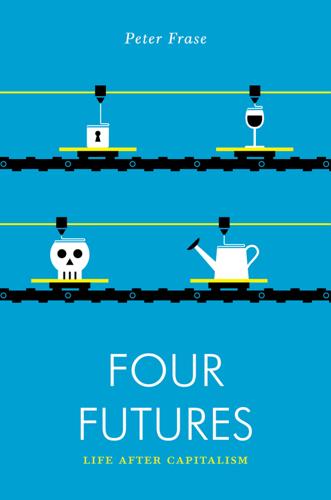
Four Futures: Life After Capitalism
by
Peter Frase
Published 10 Mar 2015
That’s a pace lower than at any time since the 1970s and half what was seen during the postwar boom years. This leads some to argue that the anecdotal accounts of great breakthroughs in robotics and computation are misleading, because they aren’t actually being translated into economic results. The economists Tyler Cowen and Robert Gordon are most closely associated with this view.15 Doug Henwood, of the Left Business Observer, makes a similar case from the Left.16 For more conservative economists like Cowen and Gordon, the problem is largely technical. The new technologies aren’t really all that great, at least from an economic perspective, compared to breakthroughs like electricity or the internal combustion engine.
…
,” Mother Jones, May/June 2013. 6Brynjolfsson and McAfee, The Second Machine Age, pp. 7–8. 7Frey and Osborne, “The Future of Employment.” 8Martin Ford, Rise of the Robots: Technology and the Threat of a Jobless Future, New York: Basic Books, 2015. 9Katie Drummond, “Clothes Will Sew Themselves in Darpa’s Sweat-Free Sweatshops,” Wired.com, June 6, 2012. 10Leanna Garfield, “These Warehouse Robots Can Boost Productivity by 800%,” TechInsider.io, February 26, 2016. 11Ilan Brat, “Robots Step into New Planting, Harvesting Roles,” Wall Street Journal, April 23, 2015. 12Shulamith Firestone, The Dialectic of Sex: The Case for Feminist Revolution, New York: Farrar, Straus and Giroux, 1970. 13Soraya Chemaly, “What Do Artificial Wombs Mean for Women?” Rewire.news, February 23, 2012. 14Drum, “Welcome Robot Overlords.” 15Tyler Cowen, The Great Stagnation: How America Ate All the Low-Hanging Fruit of Modern History, Got Sick, and Will (Eventually) Feel Better, New York: Penguin, 2011; Robert J. Gordon, “Is U.S. Economic Growth Over? Faltering Innovation Confronts the Six Headwinds,” National Bureau of Economic Research Working Paper Series, Cambridge, MA: National Bureau of Economic Research, August 2012. 16Doug Henwood, “Workers: No Longer Needed?”
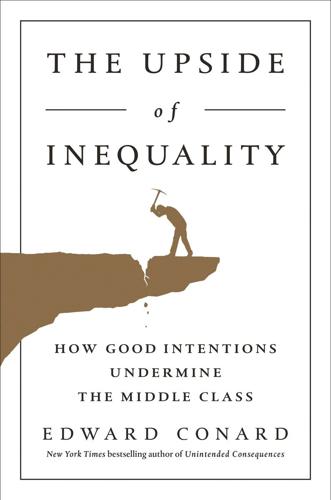
The Upside of Inequality
by
Edward Conard
Published 1 Sep 2016
Edward Lazear, “How Not to Prevent the Next Financial Meltdown,” Wall Street Journal, October 2, 2015, http://www.wsj.com/articles/how-not-to-pre vent-the-next-financial-meltdown-1443827426. 30. Conard, Unintended Consequences. 31. Robert Gordon, The Rise and Fall of American Growth (Princeton, NJ: Princeton University Press, 2016). Tyler Cowen, The Great Stagnation: How America Ate All the Low-Hanging Fruit of Modern History, Got Sick, and Will (Eventually) Feel Better (New York: Dutton, 2011). 32. John Maynard Keynes, The Economic Consequences of Peace (New York: Harcourt, Brace and Howe, 1920). 33. Paul Krugman, “The Conscience of a Liberal: Stimulus Arithmetic (Wonkish but Important),” New York Times, January 6, 2009, http://krugman.blogs.ny times.com/2009/01/06/stimulus-arithmetic-wonkish-but-important. 34.
…
It’s an understatement to say that my business partner, Mitt Romney, winning the Republican nomination for president generated interest in my first book. That interest gave me a second career. The American Enterprise Institute’s stamp of approval and the endorsements of many top economists—Glenn Hubbard, Greg Mankiw, Tyler Cowen, Nouriel Roubini, Andrei Shliefer, and others—persuaded some skeptical readers and journalists to take a more thoughtful look at my work. My research assistant, Steve Bogden, ensured that I considered every relevant economic study. I doubt there is a person who has surveyed as much of the economic landscape as Steve.
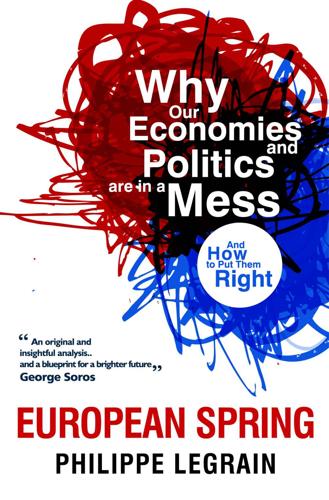
European Spring: Why Our Economies and Politics Are in a Mess - and How to Put Them Right
by
Philippe Legrain
Published 22 Apr 2014
Now he wants to build a Hyperloop – basically a solar-powered maglev train in a vacuum tube that would whisk passengers along at 760 miles (1,220 kilometres) an hour, three times faster than a high-speed train, and cost ten times less to build.705 Gloomsters argue that technological progress is grinding to a halt. The low-hanging fruit have all been picked, argues Tyler Cowen in The Great Stagnation.706 Nothing can ever compare to the great leap forward ushered in by electricity and other advances during the second wave of the Industrial Revolution between 1870 and 1900, such as cars, running water, petroleum and chemicals, claims Robert Gordon of Northwestern University.707 “Many of the original and spin-off inventions of IR #2 could happen only once – urbanisation, transportation speed, the freedom of females from the drudgery of carrying tons of water per year, and the role of central heating and air conditioning in achieving a year-round constant temperature.”
…
Interestingly, though, the highest enterprise rates are found among UK-born blacks (11.3 per cent). 699 http://startupmanifesto.eu/files/manifesto.pdf 700 http://www.economist.com/node/21559618 701 http://www.economist.com/node/17680631 702 http://www.eif.org/news_centre/publications/eif_-annual_report_2012.pdf 703 http://www.economist.com/news/finance-and-economics/21588384-stock-exchanges-are-courting-small-firms-never-capital-remedy 704 http://www.europecrowdfunding.org/2013/01/the-european-crowdfunding-network-on-euronews/ 705 http://www.bbc.co.uk/news/technology-23681266 706 Tyler Cowen, The Great Stagnation, Dutton: 2011 707 Robert J Gordon, “Is US Economic Growth Over? Faltering innovation confronts the six headwinds”, NBER working paper #18315, August 2012 708 http://www.economist.com/news/briefing/21569381-idea-innovation-and-new-technology-have-stopped-driving-growth-getting-increasing 709 http://www.voxeu.org/article/technological-progress-thing-past 710 Tools such as DNA sequencing machines and cell analysis through flow cytometry are revolutionising molecular microbiology.
…
Meanwhile, the British government is trying to inflate yet another housing bubble ahead of the election due in 2015. The UK’s recent burst of growth looks dangerously unsustainable: even though wages are still falling, debt-laden consumers are saving less and in some cases borrowing to spend more. It is not a pretty picture. The Great Stagnation Things aren’t just bad now. The future seems bleak too. Prominent economists talk of a “new normal” of permanently low growth, a “great stagnation” of innovation and even of the “end of growth” in the West altogether. (Others, on the contrary, think innovation is speeding ahead, but fear that humans will lose the “race against the machine” and that robots will steal people’s jobs.)
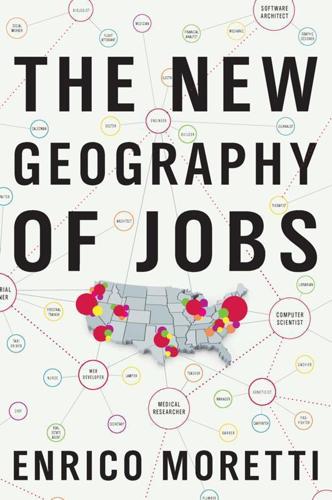
The New Geography of Jobs
by
Enrico Moretti
Published 21 May 2012
A growing number of skeptics have questioned the importance of innovation for the American economy, arguing that the increase in jobs is not large enough to offset the losses in manufacturing. Intel’s former CEO Andy Grove has famously criticized America’s “misplaced faith in the power of startups to create U.S. jobs.” Tyler Cowen’s influential book The Great Stagnation argued that companies like Facebook or Twitter do not have many employees, because they rely on their users for most of the content and are simply too small to replace the titans of the past, like Ford and General Motors. But the picture that emerges from the data is more complex.
…
See United Kingdom Great Divergence, [>]–[>], [>]–[>] and cities as intellectual environments, [>] and forces of agglomeration, [>], [>]–[>] (see also Forces of agglomeration) as geography of inequality, [>]–[>] and charity, [>]–[>] and divorce rate, [>]–[>], [>] and labor-market size, [>]–[>] and life expectancy, [>]–[>] and magnification of differences, [>]–[>] and political participation, [>]–[>] in immigration quality, [>] reversal of in failing cities, [>] and “spatial mismatch,” [>] Great Migration (1920s), [>] Great Recession (2008–2010), [>], [>]–[>], [>], [>], [>], [>], [>], [>] Great Stagnation, The (Cowen), [>] Greece, PISA scores of, [>] Green R&D, [>], [>]. See also Clean-tech companies; Solar-panel industry Greenstone, Michael, [>] Greenville-Spartanburg, South Carolina, [>] Griffith, D. W., [>]–[>] Grove, Andy, [>] Hallock, Kevin, [>] Hanauer, Nick, [>] Hanson, Gordon, [>] Harlem, [>], [>] Health services, employment in, [>] Heckman, James, [>], [>] Henderson, Rebecca, [>] Hendrix, Jimi, [>], [>] Hewlett-Packard, [>], [>], [>] High-school dropout rate, [>]–[>] High-tech sector, [>] and academic stars, [>] and multiplier effect, [>], [>]–[>], [>] and outsourcing, [>] productivity in, [>] as self-magnifying, [>], [>], [>] in Silicon Valley, [>] See also Biotech industry; Innovation sector Hipsters, manufacturing, [>]–[>] Historical factors, in economic fate of cities, [>], [>]–[>] Hitchcock, Alfred, [>] Hollywood, [>]–[>] Homcy, Charles, [>] Honeywell, [>] Hong Kong, [>], [>] Honolulu, and cost of living, [>] Hospitals, [>] Houma-Thibadoux, Louisiana, [>] Houston, [>], [>], [>], [>], [>], [>], [>] Huawei (Chinese firm), [>] Hub SoMa, [>] HubSpot, [>] Human capital, [>], [>] and American century, [>]–[>] and economic-development policies, [>] externalities from, [>]–[>] (see also Knowledge spillovers) global competition for, [>] and good working conditions, [>]–[>] salaries, [>], [>] and immigration, [>]–[>] and innovation sector, [>] investment in, [>]–[>] under-investment in (U.S.), [>] and local prosperity, [>] in twenty-first century, [>] under-supply of (U.S.), [>] and U.S. math mediocrity, [>]–[>] U.S. policies to increase stock of through education, [>]–[>] (see also College education; Education) through immigration, [>], [>] Human Capital (Becker), [>]–[>] Human ecosystems, [>] Hungary, PISA scores of, [>] Hunt, Jennifer, [>], [>] IBM as advanced manufacturer, [>] in Austin, [>] and Cadence, [>], [>] and high-tech multiplier, [>] location of, [>] patents produced by, [>] Iceland, PISA scores of, [>] Ideas, diffusion of, [>]–[>].
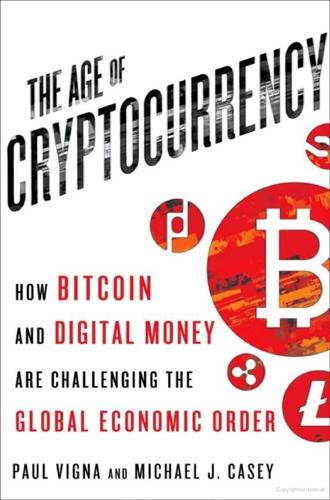
The Age of Cryptocurrency: How Bitcoin and Digital Money Are Challenging the Global Economic Order
by
Paul Vigna
and
Michael J. Casey
Published 27 Jan 2015
Visa, MasterCard, and Western Union: Employee tallies taken from 2013 annual reports for Visa Inc., MasterCard Inc., and Western Union Holding Inc. Andreessen Horowitz venture capitalist: Chris Dixon, phone interview with Michael J. Casey, June 25, 2014. Asked to describe the job market: Daniel Larimer, interviewed by Michael J. Casey, April 8, 2014. As Tyler Cowen noted in his book: Tyler Cowan, Average Is Over: Powering America Beyond the Age of the Great Stagnation (Dutton, 2013). Yale’s Robert Shiller: Joe Weisenthal, “Robert Shiller: Bitcoin Is an Amazing Example of a Bubble,” Business Insider, January 24, 2014, http://www.businessinsider.com/robert-shiller-bitcoin-2014-1#ixzz3Cmp0YFyx. New York University’s Nouriel Roubini: Erik Holm, “Nouriel Roubini: Bitcoin Is a ‘Ponzi Game,’” March 10, 2014, Wall Street Journal, MoneyBeat blog, http://blogs.wsj.com/moneybeat/2014/03/10/nouriel-roubini-bitcoin-is-a-ponzi-game/.
…
To subject their lives to such uncertainty is anathema to people who’ve expected a salaried job to last a lifetime and to provide security and permanence. People will have to figure out how to apply their particular skills to this Brave New World and, if they can’t apply them, how to rapidly acquire the right skills. As Tyler Cowen noted in his book Average Is Over, “The key questions will be: Are you good at working with intelligent machines or not? Are your skills a complement to the skills of the computer, or is the computer doing better without you? Worst of all, are you competing against the computer?” Cowen’s thesis, which drew in part from the “work is over” theory, wasn’t a rosy one for Middle America.

21 Lessons for the 21st Century
by
Yuval Noah Harari
Published 29 Aug 2018
For a general survey of methods, see: Jose David Fernández and Francisco Vico, ‘AI Methods in Algorithmic Composition: A Comprehensive Survey’, Journal of Artificial Intelligence Research 48 (2013), 513–82. 12 Eric Topol, The Patient Will See You Now: The Future of Medicine is in Your Hands (New York: Basic Books, 2015); Robert Wachter, The Digital Doctor: Hope, Hype and Harm at the Dawn of Medicine’s Computer Age (New York: McGraw-Hill Education, 2015); Simon Parkin, ‘The Artificially Intelligent Doctor Will Hear You Now’, MIT Technology Review 9 March 2016; James Gallagher, ‘Artificial intelligence “as good as cancer doctors”’, BBC, 26 January 2017. 13 Kate Brannen, ‘Air Force’s lack of drone pilots reaching “crisis” levels’, Foreign Policy, 15 January 2015. 14 Tyler Cowen, Average is Over: Powering America Beyond the Age of the Great Stagnation (New York: Dutton, 2013); Brad Bush, ‘How combined human and computer intelligence will redefine jobs’, TechCrunch, 1 November 2016. 15 Ulrich Raulff, Farewell to the Horse: The Final Century of Our Relationship (London: Allen Lane, 2017); Gregory Clark, A Farewell to Alms: A Brief Economic History of the World (Princeton: Princeton University Press, 2008), 286; Margo DeMello, Animals and Society: An Introduction to Human-Animal Studies (New York: Columbia University Press, 2012), 197; Clay McShane and Joel Tarr, ‘The Decline of the Urban Horse in American Cities’, Journal of Transport History 24:2 (2003), 177–98. 16 Lawrence F.
…
, Artificial Intelligence 199–200 (2013), 93–105. 18 ‘Google’s AlphaZero Destroys Stockfish in 100-Game Match’, Chess.com, 6 December 2017; David Silver et al., ‘Mastering Chess and Shogi by Self-Play with a General Reinforcement Learning Algorithm’, arXiv (2017), https://arxiv.org/pdf/1712.01815.pdf; see also Sarah Knapton, ‘Entire Human Chess Knowledge Learned and Surpassed by DeepMind’s AlphaZero in Four Hours’, Telegraph, 6 December 2017. 19 Cowen, Average is Over, op. cit.; Tyler Cowen, ‘What are humans still good for? The turning point in freestyle chess may be approaching’, Marginal Revolution, 5 November 2013. 20 Maddalaine Ansell, ‘Jobs for Life Are a Thing of the Past. Bring On Lifelong Learning’, Guardian, 31 May 2016. 21 Alex Williams, ‘Prozac Nation Is Now the United States of Xanax’, New York Times, 10 June 2017. 22 Simon Rippon, ‘Imposing Options on People in Poverty: The Harm of a Live Donor Organ Market’, Journal of Medical Ethics 40 (2014), 145–50; I.
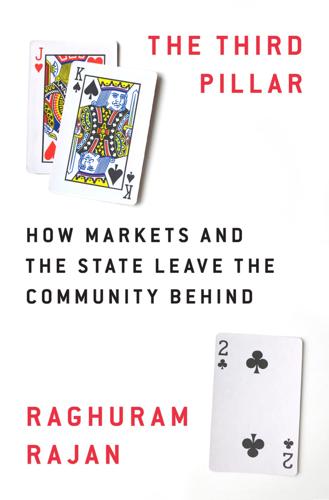
The Third Pillar: How Markets and the State Leave the Community Behind
by
Raghuram Rajan
Published 26 Feb 2019
CHAPTER 5: THE PRESSURE TO PROMISE 1. Tony Judt, Postwar: A History of Europe Science 1945 (New York: Penguin Books, 2005), 236. 2. Robert J. Gordon, The Rise and Decline of American Growth: The U.S. Standard of Living Since the Civil War (Princeton, NJ: Princeton University Press, 2016), 120. 3. See Tyler Cowen, The Great Stagnation: How America Ate All the Low-hanging Fruit of Modern History, Got Sick, and Will (Eventually) Feel Better (New York: Dutton, 2011). 4. See Harold James, Europe Reborn, A History 1914–2000 (New York: Routledge, 2015), 231–33. 5. Markus K. Brunnermeier, Harold James, and Jean-Pierre Landau, The Euro and the Battle of Ideas (Princeton, NJ: Princeton University Press, 2018). 6.
…
With the frontier expanding more slowly, their growth also slowed. Most economists envisage growth for economies at the frontier as periods of path-breaking innovation (when the key innovations of the technological revolution emerge) followed by steady development and implementation until most of the gains from that innovation have been reaped. Tyler Cowen of George Mason University and Robert Gordon of Northwestern University argue that most of the possibilities of the Second Industrial Revolution had been exhausted by the end of the 1960s.22 For instance, the big innovation that made commercial air travel more attractive than travel by ocean liner was reasonably safe and fast jet planes with pressurized air cabins.
…
Judt, Postwar, 334. 21. Enoch Powell, “Rivers of Blood” (speech), Conservative Association meeting, Birmingham, UK, April 20, 1968, transcript, http://www.telegraph.co.uk/comment/3643823/Enoch-Powells-Rivers-of-Blood-speech.html. 22. Gordon, Rise and Decline of American Growth; Cowen, Great Stagnation. 23. Gordon, Rise and Decline of American Growth, 13. 24. Paul A. David, “The Dynamo and the Computer: An Historical Perspective on the Modern Productivity Paradox,” The American Economic Review 80, no. 2, (May, 1990): 355–61. 25. James, Europe Reborn, 390–91. 26. See Chad Syverson, “Challenges to Mismeasurement Explanations for the U.S.
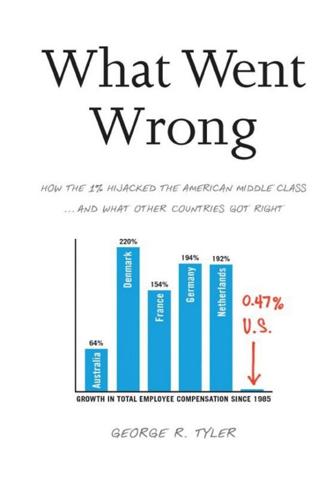
What Went Wrong: How the 1% Hijacked the American Middle Class . . . And What Other Countries Got Right
by
George R. Tyler
Published 15 Jul 2013
Jensen, “Capitalism Isn’t Broken,” Wall Street Journal, March 29, 1996, A-10. 29 Norbert Häring, “Man As a Yardstick,” Handelsblatt, Aug. 19, 2010. 30 Charles Lane, “Obama’s Leaky Bucket,” Washington Post, Dec. 20, 2011. 31 Andrew G. Berg and Jonathan D. Ostry, “Equality and Efficiency: Is There a Trade-off Between the Two or Do They Go Hand in Hand,” Finance and Development, International Monetary Fund, Washington, September 2011. 32 David Brooks, “The Biggest Issue,” New York Times, July 29, 2008. See also Tyler Cowen, The Great Stagnation (New York: A Penguin Group e-Special from Dutton, 2011). 33 Claudia Goldin and Lawrence F. Katz, The Race Between Education and Technology (Cambridge, MA: Harvard University Press, 2008). 34 This includes: Alan Blinder, Edward N. Wolff, Deborah Reed, Daniel Cohen, Gordon Lafer, Frank Levy, and Peter Temin.
…
The effect of a minimum wage increase on the overall price level is likely to be small … small enough that they are far outweighed by fluctuations in prices for products such as gasoline and apparel.”69 CHAPTER 20 OFFSHORING AND THE APPLE PROBLEM “Manufacturing in America is in serious decline, with 40,000 factory closures and more than 4 million jobs lost over the last decade.”1 Manufacturing: A Better Future for America, Alliance for American Manufacturing, 2009 “We stood by as big American companies became global companies with no more loyalty or connection to the United States than a GPS device.”2 ROBERT REICH, Aftershock “The problem with that strategy is that for the past two decades we have allowed our industrial and technological base to deteriorate as talent and capital were grossly misallocated toward other sectors of the economy….”3 STEVEN PEARLSTEIN, Washington Post, September 2010 “American companies often save on costs by finding lower wages abroad, not by enhancing the abilities of American workers.”4 TYLER COWEN, George Mason University, August 2011 “These are the jobs that have created the Midwestern middle class for generations. Manufacturing jobs paid for college educations, including mine. They have been cut in half over the past two decades.”5 JEFFREY IMMELT, CEO, General Electric, December 2009 Lord Uxbridge was Wellington’s deputy commander as the combined forces arrayed against Napoleon fought desperately in Belgium against the fearsome French cuirassiers and cannoneers who had conquered Europe.
…
Wascher, Minimum Wages, 97. 69 Ibid., 248, 252. CHAPTER 20 1 “Manufacturing: A Better Future for America,” ed. Richard McCormack, Alliance for American Manufacturing, 2009. 2 Robert Reich, Aftershock, 56. 3 Steven Pearlstein, “The Bleak Truth About Unemployment,” Washington Post, Sept. 8, 2010. 4 Tyler Cowen, “The Sad Statistic That Trumps the Others,” New York Times, Aug. 21, 2011. 5 Jeffrey Immelt, “Renewing American Leadership,” General Electric, Dec. 9, 2009. 6 Max Hastings “The West’s Crisis of Honest Leaders,” Financial Times, Aug. 15, 2011. 7 “Public Says American Work Life Is Worsening, But Most Workers Remain Satisfied with Their Jobs,” Social Trends Project, Pew Research Center, September 2006. 8 “The Story so Far,” Economist, Jan. 19, 2013, 5. 9 Justin R.
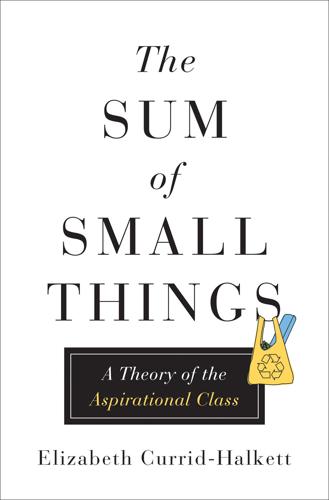
The Sum of Small Things: A Theory of the Aspirational Class
by
Elizabeth Currid-Halkett
Published 14 May 2017
The roots of this phenomenon can be traced to the dating market of urban centers (particularly as people marry like, rather than marrying “up” or “down,” a twenty-first-century trend economists term “assortative mating”23). Smart people want to be around other smart people not just for work, but also for friendships and romantic relationships, and over time that results in highly stratified hyper-educated affluent places where, as the economist Tyler Cowen remarked, “Money and talent become clustered in high-powered, two-earner families determined to do everything possible to advance the interests of their children.”24 The social and economic interplay of urban inhabitants enables and promotes cities as the ultimate sites of consumption. A sizable number of the people in today’s metropolis are more highly skilled and as a result more highly paid than most and they demand luxurious consumption options—whether art galleries, prestigious preschools, or cocktail bars.
…
Normal middle-class Americans have had their homes repossessed, their credit ratings slashed, and their ability to establish their identity through consumption almost entirely eradicated. We need to find a new way to live. These observations on America coincide with what is known by economists and policymakers as the Great Stagnation—the alarming finding that the median wage hasn’t grown since 1973, rising only by 10% in real terms over the past 37 years. In short, 90% of America hasn’t gained a penny over the past four decades. The numbers show it: Median income for the middle class dropped from $73,000 in 2000 to $69,500 in 2011, while median net worth of this household plummeted to $93,150, from almost $130,000 in 2000 and a high of $152,000 in 2008 (all figures are in 2011 dollars).17 Goods may be cheaper, but that doesn’t mean much if you don’t have a paycheck to cover them (and must rely on credit cards instead).
…
A., 60 Gilt, 12 Glaeser, Ed, 152–53, 172 Glassell Park, 110–16 global cities, 17, 150, 181 globalization: cities affected by, 150–51; and clothing industry, 132–34; and conspicuous production, 134–37; deindustrialization as consequence of, 16; economic benefits of, 146; middle class arising from, 191–98, 232n33; middle class harmed by, 187; and service economy, 17 Golden, Janet, 91 Golden Gate Mothers Group, 88 Gonzalez, Marta, 159–60 Gothot Ideal, 114 Great Exhibition (London, 1851), 9 Great Recession, 14, 52, 69, 75, 168, 187, 189 Great Stagnation, 189 Greenfield, Jerry, 143–44 Greenfield, Karl Taro, 105 Greif, Mark, 104, 117, 125 Grindr, 173–74 habitus, 48, 95, 178, 224n20 Halfpapp, Elisabeth, 101 Handbury, Jessie, 156, 157 happiness, 182–83, 195 happiness-income paradox, 183 Harvey, Corky, 82, 83 health care, 72, 73f Heffetz, Ori, 35–36, 38, 41 hidden amenities, 157, 164, 172–75 hipsters, 57–58 Hispanics, consumption patterns of, 37 Holt, Douglas, 52, 53–54 home births, 93–94, 226n42 homeownership, 165–66 household furnishings, 169–70 housekeepers, 168 housework, 66 housing costs, 164–68, 187 Houston, 162, 165, 170, 172 Hsieh, Tony, 152 Hurst, Erik, 35 Hutchinson, T.
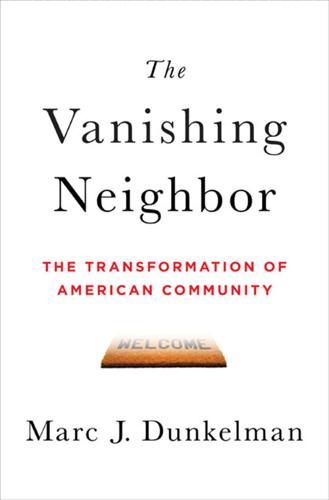
The Vanishing Neighbor: The Transformation of American Community
by
Marc J. Dunkelman
Published 3 Aug 2014
By several estimates, American innovation has slowed of late, as massive investments in fields like green energy and pharmaceuticals have failed to produce the return that investments in information technology generated just a few decades ago.29 (Some of that analysis, we should note, predates the new development of “fracking.”) George Mason University economist Tyler Cowen recently argued that innovation in the United States has actually stagnated, noting that we’ve picked the low-hanging fruit of technologies produced by previous generations and are burning through the competitive advantages those breakthroughs bestowed on today’s economy.30 Peter Thiel, a cofounder of PayPal and a powerful figure in the world of venture capital, has sounded a similar alarm, arguing that whatever advances Silicon Valley has spurred of late have been cancelled out by America’s failure to make progress on other technological and scientific fronts.31 No fair assessment can blame the stagnation of American innovation entirely on the structure of American community.
…
.: Harvard University Press, 2009), 15–16. 26Safford, Why the Garden Club Couldn’t Save Youngstown, 22, 31–32, 63–68. 27Safford, Why the Garden Club Couldn’t Save Youngstown, 83, 92–95. 28Locke, Remaking the Italian Economy, 134. 29Michael Mandel, “The Failed Promise of Innovation in the U.S.,” Bloomberg Businessweek, June 3, 2009. 30Tyler Cowen, The Great Stagnation (New York: Dutton, 2011). 31http://news.cnet.com/8301-31921_3-20096067-281/peter-thiel-thinks-tech-innovation-has-stalled/. 32Edward Glaeser, Triumph of the City: How Our Greatest Invention Makes Us Richer, Smarter, Greener, Healthier, and Happier (New York: Penguin Press, 2011). 33Richard Florida, The Rise of the Creative Class: And How It’s Transforming Work, Leisure, Community and Everyday Life (New York: Basic Books, 2002). 34Elsa Brenner, “In Westchester County, the Platinum Mile Is Reinvented, Again,” New York Times, January 3, 2012. 35Charles V.
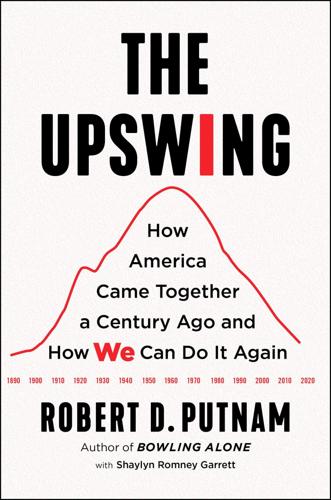
The Upswing: How America Came Together a Century Ago and How We Can Do It Again
by
Robert D. Putnam
Published 12 Oct 2020
Uslaner and Mitchell Brown, “Inequality, Trust, and Civic Engagement,” American Politics Research 33, no. 6 (2005): 868–894, doi:10.1177/1532673X04271903; and Keith Payne, The Broken Ladder: How Inequality Affects the Way We Think, Live, and Die (New York: Viking, 2017). 23 David Morris Potter, People of Plenty: Economic Abundance and the American Character (Chicago: University of Chicago Press, 1954). 24 See Tyler Cowen, The Great Stagnation: How America Ate All the Low-Hanging Fruit of Modern History, Got Sick, and Will (Eventually) Feel Better (New York: Dutton, 2011); and John L. Campbell, American Discontent: The Rise of Donald Trump and Decline of the Golden Age (Oxford: Oxford University Press, 2018). For a sophisticated and thoroughly documented argument about the effects of technological innovation and productivity (1920–1970), see Robert J.
…
Some argue that affluence encourages a focus on “we,” whereas hard times produce a focus on “I.” In the midst of the postwar boom, a widely read book, People of Plenty by historian David Potter (1954), emphasized that material abundance was fundamental to the consumerist consensus in American society.23 More recently, Tyler Cowen has argued that economic dynamism before 1973 allowed for policies that promoted equality, and conversely, the post-1970s stagnation explains the trend toward inequality and political dysfunction. That stagnation has in turn been explained by the end of a long period (1880–1940) of high innovation and productivity growth.24 When people are affluent and satisfied, so the argument goes, they can afford to be more generous toward others.

Move Fast and Break Things: How Facebook, Google, and Amazon Cornered Culture and Undermined Democracy
by
Jonathan Taplin
Published 17 Apr 2017
Even Silicon Valley heroes such as Elon Musk and his Tesla car are merely producing what Christensen calls “performance-improving innovations [that] replace old products with new and better models. They generally create few jobs because they’re substitutive: When customers buy the new product, they usually don’t buy the old product.” While economists of such different political affiliations as Paul Krugman, Larry Summers, and Tyler Cowen all have written extensively about the cause of the joblessness and “secular stagnation” in the US economy that has endured since 2000, they never examine the role that monopoly capitalism might play in this crisis. If the rise of monopoly can be seen as a cause of economic stagnation, why has it endured?
…
Imagine Picasso having to persuade an executive at Pernod to support his earliest cubist paintings. Or a Coca-Cola marketer in Chicago listening to Louis Armstrong’s breakthrough “West End Blues” and wondering, “Will it help sell soda?” I think the growth of advertising in our time is symbolic of a deep crisis in capitalism. I have written earlier in this book of the great stagnation—the period since the early 1970s when median wages refused to rise even though productivity was rising dramatically. In the face of such wage stagnation, firms have to spend more money on marketing to get consumers to keep buying. As you wander down the supermarket aisle perusing endless varieties of detergent, all basically containing the same ingredients, the only distinguishing factor is the marketing pitch.

Power and Progress: Our Thousand-Year Struggle Over Technology and Prosperity
by
Daron Acemoglu
and
Simon Johnson
Published 15 May 2023
Moreover, measurement problems cannot account for the current productivity slowdown; industries with greater investment in digital technologies show neither differential productivity deceleration nor any evidence of faster quality improvements than those that are less digital. A few economists, such as Tyler Cowen and Robert Gordon, believe that this disappointing productivity performance reflects dwindling opportunities for revolutionary breakthroughs. In contrast to techno-optimists, they claim, the great innovations are behind us, and improvements from now on will be incremental, leading only to slow productivity growth.
…
See also Pethokoukis (2017b). Evidence that manufacturing industries investing more in digital technologies are not showing faster productivity growth or any evidence of more mismeasurement is from Acemoglu, Autor, Dorn, Hanson, and Price (2014). Robert Gordon’s views are in Gordon (2016). For Tyler Cowen’s views, see Cowen (2010). The discussion of Japanese robot adoption and later attempts to introduce flexibility is provided in Krzywdzinski (2021). On the Fremont plant before and after Toyota’s investments and comparisons to other US car manufacturers, see Shimada and MacDuffie (1986) and MacDuffie and Krafcik (1992).
…
Presidential Address Before the Fifteenth Annual Meeting of the Taylor Society, December 6, 1928. Bulletin of the Taylor Society 14, no. 1 (February): 2‒10. Corak, Miles. 2013. “Income Inequality, Equality of Opportunity, and Intergenerational Mobility.” Journal of Economic Perspectives 27, no. 3 (Summer): 79‒102. Cowen, Tyler. 2010. The Great Stagnation. New York: Dutton. CQ Researcher. 1945. “Automobiles in the Postwar Economy.” https://library.cqpress.com/cqresearcher/document.php?id=cqresrre1945 082100. Crafts, Nicholas F. R. 1977. “Industrial Revolution in England and France: Some Thoughts on the Question, Why Was England First?” Economic History Review 30, no. 3: 429‒441.

Smart Cities: Big Data, Civic Hackers, and the Quest for a New Utopia
by
Anthony M. Townsend
Published 29 Sep 2013
The origins and the economic importance of the Internet are part of a much larger debate about the nature of technological innovation and economic growth. The industrial revolution reshaped the material basis of society, introducing technologies and products we still use today. But there are widely differing views on just how that happened. Pessimists like economist Tyler Cowen believe that a handful of breakthrough innovations drove America’s economic engine over the last one hundred years. He sees the decline of productivity growth, the pace of improvement in output per unit of input (labor, capital, machinery), in the US economy as a sign that we have finally exhausted the stockpile of the breakthroughs of the late nineteenth and early twentieth century.
…
Life is better and we have more stuff, but the pace of change has slowed down compared to what people saw two or three generations ago.” Not only does Cowen argue that big breakthroughs are the true source of technological progress, he doesn’t see anything new in the pipeline of the same magnitude. The result, he concludes, is an inevitable “great stagnation.”36 Where Cowen sees scarcity, Google’s chief economist Hal Varian sees abundance. For Varian, the big breakthroughs of the industrial revolution happened only after, and only because of, a new substrate of interoperable technological components that were invented first. In a 2008 interview, he described this process of “combinatorial innovation”: “if you look historically, you’ll find periods in history where there would be the availability of . . . different component parts that innovators could combine or recombine to create new inventions.
…
Norton, Fighting Traffic: The Dawn of the Motor Age in the American City (Cambridge, MA: MIT Press, 2008), 25. 12Duffus, “A Rising Tide of Traffic Rolls Over New York,” XX4. 13Norton, Fighting Traffic, 25–27. 14Norton, Fighting Traffic, 24. 15Norton, Fighting Traffic, 105. 16Norton, Fighting Traffic, 2. 17Campanella, “Jane Jacobs and the Death and Life of American Planning.” 18Anthony Flint, Wrestling with Moses: How Jane Jacobs Took on New York’s Master Builder and Transformed the American City (New York: Random House, 2009), 51. 19Author’s calculation using estimates from Caro, The Power Broker, 9, and US Bureau of Labor Statistics CPI Inflation Calculator, http://www.bls.gov/cpi/cpicalc.htm, accessed August 15, 2012. 20Flint, Wrestling with Moses, 85–87. 21Flint, Wrestling with Moses, 100. 22Flint, Wrestling with Moses, 105. 23Flint, Wrestling with Moses, 99. 24Flint, Wrestling with Moses, 109. 25Campanella, “Jane Jacobs and the Death and Life of American Planning.” 26Tom Wright, remarks, “Tools for Engagement” workshop, Regional Plan Association & Lincoln Institute for Land Policy, New York, March 29, 2012. 27Patrick Geddes, quoted in Jaqueline Tyrwhitt, ed., Patrick Geddes in India (London: Lund Humphries: 1947), 45. 28Helen Meller, Patrick Geddes: Social Evolutionist and City Planner (New York: Routledge, 1990), 76–79. 29Patrick Geddes, quoted in Tyrwhitt, ed., Patrick Geddes in India, 41 30Alasdair Geddes, quoted in Tyrwhitt, ed., Patrick Geddes in India, 15. 31Lewis Mumford, quoted in in Tyrwhitt, ed., Patrick Geddes in India, 11. 32Quoted in Welter, Biopolis, 18. 33Nicolai Ouroussoff, “Outgrowing Jane Jacobs and Her New York, New York Times, April 30, 2006, http://www,nytimes.com/2006/04/30/weekinreview/30jacobs.html. 34Campanella, “Jane Jacobs and the Death and Life of American Planning.” 35Fareed Zakaria, “Special Address: At the Intersection of Globalization and Urbanization,” SmarterCities Forum, Rio de Janeiro, Brazil, November 9, 2011. 36Tyler Cowen, The Great Stagnation: How America Ate All The Low-Hanging Fruit of Modern History, Got Sick, and Will (Eventually) Feel Better (New York: Dutton, 2011), Kindle edition, location 93. 37“Hal Varian on How the Web Challenges Managers,” video interview with James Manyika, McKinsey & Co., last modified January 2009, http://www.mckinseyquarterly.com/Hal_Varian_on_how_the_Web_challenges_ managers_2286. 38Joi Ito, “The Internet, innovation and learning,” last modified December 5, 2011, http://joi.ito.com/weblog/2011/12/05/the-internet-in.html. 39Ito, “The Internet, innovation and learning.” 40Michael Hiltzik, “So, who really did invent the Internet?”

Evil Geniuses: The Unmaking of America: A Recent History
by
Kurt Andersen
Published 14 Sep 2020
The outbreak of mass nostalgia in the 1970s that then developed into a general cultural listlessness, in other words, is comorbid with what happened to our political economy. One illness didn’t exactly cause the other illness, but each made the other more serious, and harder to cure. The economics professor (and author and blogger and podcaster) Tyler Cowen has written intelligently about our national stagnation and “the growing number of people in our society who accept, welcome, or even enforce a resistance to things new, different, or challenging.” He also thinks we reached a tipping point on this score in the 1990s. “Americans are in fact working much harder than before to postpone change,” he wrote in his 2017 book The Complacent Class, or to avoid it altogether, and this is true whether we’re talking about corporate competition, changing residences or jobs, or building things.
…
That’s probably because Cowen is a product and promoter of that turn—incubated as a student at George Mason University in the early 1980s just as the libertarian right turned it into a headquarters. He is now a George Mason professor and director of its Mercatus Center, the think tank created by Charles Koch, with whom he has a mutual admiration society.*1 Cowen correctly points to many symptoms of the disease he calls the Great Stagnation, but he’s evidently too ideologically blindered to specify all its causes and comorbidities or to recommend emergency treatment. His free-market faith obliges him to conclude that the only real problem is the slower rate of economic growth for most of the last half-century. Furthermore, he thinks the long American economic heyday from the late 1800s through the 1970s came to its natural conclusion because we’d picked and eaten all “the low-hanging fruit” that produced easy growth—cheap land, fossil fuels, new technologies, mass education.
…
Will we finally summon the will to stop this willful self-destruction? With our government in the corrupting grip of big business and the rich as it was more than a century ago, America—the land of the new, past master at meeting unprecedented challenges—would prefer not to. *1 Cowen dedicated his short 2011 book The Great Stagnation to Peter Thiel, who he calls “one of the greatest and most important public intellectuals of our entire time. Throughout the course of history, he will be recognized as such.” Thiel is the libertarian billionaire cofounder of PayPal who donated $1.25 million to the 2016 Trump campaign. *2 To his credit, in his 2018 book Stubborn Attachments, Cowen grants that his libertarianism is nondoctrinaire enough to allow that a few problems, such as the climate crisis, do require massive government action
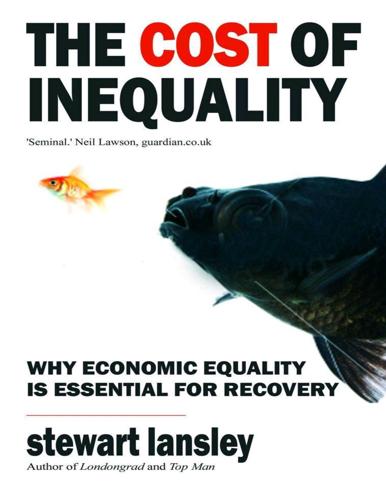
The Cost of Inequality: Why Economic Equality Is Essential for Recovery
by
Stewart Lansley
Published 19 Jan 2012
They also led to perverse business incentives. As it became easier to make big money through business strategies that were essentially unproductive, trading, investment and restructuring decisions changed in ways that often weakened the foundations of the economy. According to the American economist, Tyler Cowen, the author of the influential book, The Great Stagnation, the increased concentration at the top mattered because it had been largely generated within finance, encouraging banks to ‘take far too many risks and go way out on a limb, often in a correlated fashion.’ Over time, Cowen argues, the way the finance sector operates ‘corrodes productivity, because what the banks do bears almost no resemblance to a process of getting capital into the hands of those who can make most efficient use of it.

Exponential Organizations: Why New Organizations Are Ten Times Better, Faster, and Cheaper Than Yours (And What to Do About It)
by
Salim Ismail
and
Yuri van Geest
Published 17 Oct 2014
So, in that sense, the rise of ExOs is a deepening of the specialization trend that started 10,000 years ago: only focus on those areas in which you are really outperforming. This not only maximizes profits, but in a world with pervasive digital reputational systems, also sets your image at the highest possible level, as author Tyler Cowen says in the title of his book: Average is Over. Airline operators used to build their own engines, an intricate and high-risk operation. Then GE and Rolls Royce, both experts in manufacturing engines, began offering leasing programs. Today, airlines pay for engines by the number of hours flown.
…
Great By Choice: Uncertainty, Chaos, and Luck - -Why Some Thrive Despite Them All. HarperBusiness. Cooper, B., & Vlaskovits, P. (2013). The Lean Entrepreneur: How Visionaries Create Products, Innovate with New Ventures, and Disrupt Markets. Wiley. Cowen, T. (2013). Average Is Over: Powering America Beyond the Age of the Great Stagnation. Dutton Adult. Cusumano, M. A. (2001). Strategic Thinking for the Next Economy. Jossey-Bass. Cusumano, M. A. (2010). Staying Power: Six Enduring Principles for Managing Strategy and Innovation in an Uncertain World. Oxford University Press. Davidow, W. H., & Malone, M. S. (1992). The Virtual Corporation: Structuring and Revitalizing the Corporation for the 21st Century.

The Shifts and the Shocks: What We've Learned--And Have Still to Learn--From the Financial Crisis
by
Martin Wolf
Published 24 Nov 2015
But the other component of economic growth – rising productivity – is even more important than demography in determining the rate of growth over the long run. It is also the principal determinant of incomes per head. Nobody knows what will happen to productivity over the coming decades, but some well-informed people have put forward reasonable arguments that it must slow. Among these are Robert Gordon of Northwestern University and Tyler Cowen of George Mason University.34 An important reason why the pace of innovation might be slowing is that many opportunities have already been exploited: the population of the high-income countries is already highly educated and highly urbanized; the economy has already exploited the most readily available natural resources; people have already enjoyed the fruit of many life- and economy-transforming innovations, such as running water and sanitation, inoculation, electricity, chemicals, pharmaceuticals, the internal combustion engine, civil aviation, telephony, the computer and the internet.
…
See International Monetary Fund, Fiscal Adjustment in an Uncertain World, Fiscal Monitor, April 2013, Fig. 2, p. 6. 34. See Robert Gordon, ‘Is U. S. Economic Growth Over? Faltering Innovation Confronts the Six Headwinds’, National Bureau of Economic Research Working Paper No. 18315, August 2012, www.nber.org; TylerCowen, The Great Stagnation: How America Ate All the Low-Hanging Fruit of Modern History, Got Sick, and Will (Eventually) Feel Better (London: Dutton/Penguin, 2011). 35. Erik Brynjolfsson and Andrew McAfee, The Second Machine Age: Work, Progress and Prosperity in a Time of Brilliant Technologies (New York and London: W.
…
‘Macroprudential Instruments and Frameworks: A Stocktaking of Issues and Experiences’, CGFS Papers No. 38, May 2010. http://www.bis.org/publ/cgfs38.pdf. Congressional Budget Office. ‘Trends in the Distribution of Household Incomes between 1979 and 2007’, October 2011. http://www.cbo.gov/sites/default/files/cbofiles/attachments/10-25-HouseholdIncome.pdf. Cowen, Tyler. The Great Stagnation: How America Ate All the Low-Hanging Fruit of Modern History, Got Sick, and Will (Eventually) Feel Better (New York: Dutton, 2011). Crafts, Nicholas and Peter Fearndon. The Great Depression of the 1930s: Lessons for Today (Oxford: Oxford University Press, 2013). Croft, Jane, Kate Burgess and George Parker.

Adapt: Why Success Always Starts With Failure
by
Tim Harford
Published 1 Jun 2011
: McKinstry, Spitfire, p. 31. 88 ‘Freak machines’: McKinstry, Spitfire, p. 29. 89 England’s pride was intact: McKinstry, Spitfire, p. 32. 89 ‘The Battle of Britain was won by Chamberlain’: McKinstry, Spitfire, p.194. 89 One might think that there is no problem enouraging innovation: as this book was going to press, Tyler Cowen’s book The Great Stagnation (Dutton, 2011) appeared. Owen’s book offers further evidence of an innovation slowdown in addition to that presented here. 90 Even the design of niche cars: Chris Anderson, ‘In the next industrial revolution, atoms are the new bits’, Wired, February 2010, http://www.wired.com/magazine/2010/01/ff_newrevolution/ 90 ‘Failure for free’: Clay Shirky, Here Comes Everybody (London: Penguin, 2008). 90 US health secretary Margaret Heckler announced: http://www.pbs.org/newshour/bb/health/jan-june01/aids_6-27.html 92 The whole process has become harder: Benjamin F.
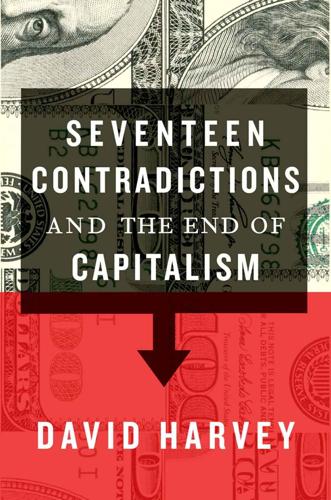
Seventeen Contradictions and the End of Capitalism
by
David Harvey
Published 3 Apr 2014
Martin Wolf, an influential economist with the Financial Times, however, accepted much of what Gordon had to say and concluded that economic elites in the high-income world would welcome the future that Gordon described but everyone else would like it ‘vastly less. Get used to this. It will not change.’ Other contributions would be Tyler Cowen, The Great Stagnation: How America Ate all the Low-Hanging Fruit of Modern History, Got Sick and Will (Eventually) Feel Better, E-special from Dutton, 2011. All these arguments are, however, US-focused. 3. The Thelluson case is described in Hudson, The Bubble and Beyond. 4. Cited in Karl Marx, Capital, Volume 3, Harmondsworth, Penguin, p. 519. 5.

The Coming Wave: Technology, Power, and the Twenty-First Century's Greatest Dilemma
by
Mustafa Suleyman
Published 4 Sep 2023
GO TO NOTE REFERENCE IN TEXT Should it hold, in ten years Azhar, Exponential, 249. GO TO NOTE REFERENCE IN TEXT Outside the weightless world of code See, for example, Michael Bhaskar, Human Frontiers: The Future of Big Ideas in an Age of Small Thinking (Cambridge, Mass.: MIT Press, 2021); Tyler Cowen, The Great Stagnation: How America Ate All the Low-Hanging Fruit of Modern History, Got Sick, and Will (Eventually) Feel Better (New York: Dutton, 2011); and Robert Gordon, The Rise and Fall of American Growth: The U.S. Standard of Living Since the Civil War (Princeton, N.J.: Princeton University Press, 2017), among many others.
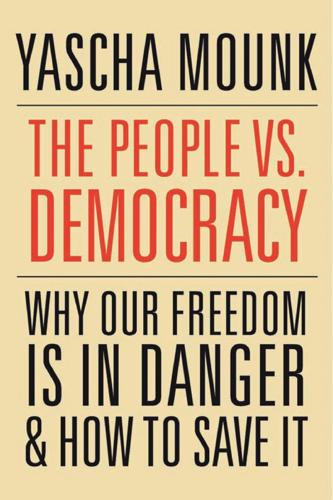
The People vs. Democracy: Why Our Freedom Is in Danger and How to Save It
by
Yascha Mounk
Published 15 Feb 2018
Federal Reserve Bank of Cleveland Working Paper no. 14–05, June 19, 2014, https://papers.ssrn.com/sol3/papers.cfm?abstract_id=2456813. 12. See Lawrence H. Summer, “U.S. Economic Prospects: Secular Stagnation, Hysteresis, and the Zero Lower Bound,” Business Economics 49 (2014): 65–73; and Tyler Cowen, The Great Stagnation: How America Ate All the Low-Hanging Fruit of Modern History, Got Sick, and Will (Eventually) Feel Better (New York: Dutton, 2011). For a nuanced discussion of the prospects of a convergence between countries like China, on the one hand, and North America as well as Western Europe, on the other, read Dani Rodrik, “The Future of Economic Convergence,” Jackson Hole Symposium of the Federal Reserve Bank of Kansas City, 2011, http://drodrik.scholar.harvard.edu/files/dani-rodrik/files/future-economic-convergence.pdf?

Elon Musk: Tesla, SpaceX, and the Quest for a Fantastic Future
by
Ashlee Vance
Published 18 May 2015
One camp holds that SolarCity, Tesla, and SpaceX offer little in the way of real hope for an industry that could use some blockbuster innovations. For the other camp, Musk is the real deal and the brightest shining star of what they see as a coming revolution in technology. The economist Tyler Cowen—who has earned some measure of fame in recent years for his insightful writings about the state of the technology industry and his ideas on where it may go—falls into that first camp. In The Great Stagnation, Cowen bemoaned the lack of big technological advances and argued that the American economy has slowed and wages have been depressed as a result. “In a figurative sense, the American economy has enjoyed lots of low-hanging fruit since at least the seventeenth century, whether it be free land, lots of immigrant labor, or powerful new technologies,” he wrote.

Political Order and Political Decay: From the Industrial Revolution to the Globalization of Democracy
by
Francis Fukuyama
Published 29 Sep 2014
We assume today that revolutionary new technologies equivalent to steam power and the internal combustion engine will continue to appear into the future. But the laws of physics do not guarantee such a result. It is entirely possible that the first 150 years of the Industrial Revolution captured what Tyler Cowen calls the “low-hanging fruit” of productivity advance, and that while future innovations will continue, the rate at which they improve human welfare will fall. Indeed, a number of laws of physics suggest that there might be hard limits on the carrying capacity of the planet to sustain growing populations at high standards of living.
…
American Economic Review 66(2):95–130. Cornford, James. 1963. “The Transformation of Conservatism in the Late Nineteenth Century.” Victorian Studies 7:35–66. Cortés Condé, Roberto. 2009. The Political Economy of Argentina in the Twentieth Century. New York: Cambridge University Press. Cowen, Tyler. 2011. The Great Stagnation: How America Ate All the Low-Hanging Fruit of Modern History, Got Sick, and Will (Eventually) Feel Better. New York: Dutton. Cox, Gary. 2013. “The Power of the Purse and the Reversionary Budget.” Unpublished paper. Cox, Gary, Douglass North, and Barry Weingast. 2013. “The Violence Trap: A Political-Economic Approach to the Problem of Development.”

Plutocrats: The Rise of the New Global Super-Rich and the Fall of Everyone Else
by
Chrystia Freeland
Published 11 Oct 2012
Congressional Budget Office. “Trends in the Distribution of Household Income Between 1979 and 2007.” October 2011. Cost, Jay. Spoiled Rotten: How the Politics of Patronage Corrupted the Once Noble Democratic Party and Now Threatens the American Republic. Broadside Books, 2012. Cowen, Tyler. The Great Stagnation: How America Ate All the Low-Hanging Fruit of Modern History, Got Sick, and Will (Eventually) Feel Better. Dutton, 2011. Crowley, Roger. City of Fortune: How Venice Ruled the Seas. Random House, 2012. Diamond, Peter, and Emmanuel Saez. “The Case for a Progressive Tax: From Basic Research to Policy Recommendations.”
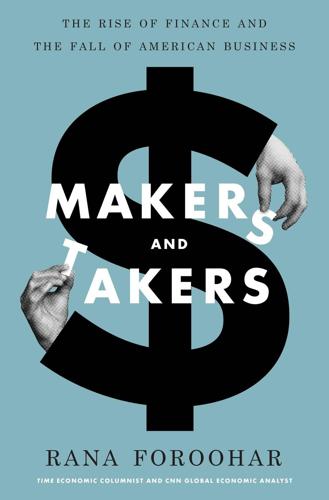
Makers and Takers: The Rise of Finance and the Fall of American Business
by
Rana Foroohar
Published 16 May 2016
Princeton, NJ: Princeton University Press, 2014. Clinton, Hillary Rodham. Hard Choices. New York: Simon & Schuster, 2014. Coates, John. The Hour between Dog and Wolf: Risk-taking, Gut Feelings and the Biology of Boom and Bust. New York: Penguin Press, 2012. Cowen, Tyler. Average Is Over: Powering America Beyond the Age of the Great Stagnation. New York: DUTTON / The Penguin Group, 2013. Das, Satyajit. Extreme Money: Masters of the Universe and the Cult of Risk. Upper Saddle River, NJ: FT Press, 2011. Davis, Gerald F. Managed by the Markets: How Finance Reshaped America. Oxford: Oxford University Press, 2009. Dobbs, Richard, James Manyika, and Jonathan Woetzel.
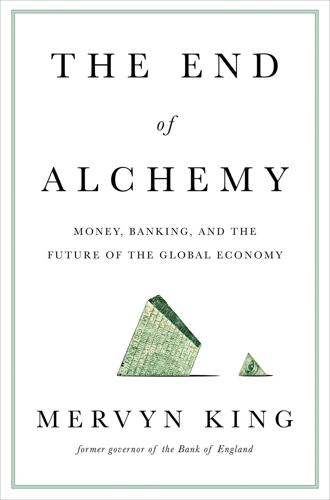
The End of Alchemy: Money, Banking and the Future of the Global Economy
by
Mervyn King
Published 3 Mar 2016
Cooper, Russell and Andrew John (1988), ‘Coordinating Coordination Failures in Keynesian Models’, Quarterly Journal of Economics, Vol. 103, No. 3, pp. 441–63. Cowen, David, Richard Sylla and Robert Wright (2006), ‘Alexander Hamilton, Central Banker: Crisis Management During the U.S. Financial Panic of 1972’, Business History Review, Vol. 83, No. 1, pp. 61–86. Cowen, Tyler (2011), ‘The Great Stagnation: How America Ate All the Low-Hanging Fruit of Modern History, Got Sick, and Will (Eventually) Feel Better’, Penguin eSpecial. Crowe, Christopher and Ellen Meade (2007), ‘The Evolution of Central Bank Governance around the World’, Journal of Economic Perspectives, Vol. 21, No. 4, pp. 69–90. Davidsson, Johan Bo (2011), ‘An Analytical Overview of Labour Market Reforms Across the EU: Making Sense of the Variation’, European University Institute, mimeo.

The Rise and Fall of Nations: Forces of Change in the Post-Crisis World
by
Ruchir Sharma
Published 5 Jun 2016
How Asia Works: Success and Failure in the World’s Most Dynamic Region. New York: Grove, 2013. Surowiecki, James. The Wisdom of Crowds: Why the Many Are Smarter Than the Few and How Collective Wisdom Shapes Business, Economies, Societies, and Nations. New York: Doubleday, 2004. Tilton, Andrew. “Still Wading Through ‘Great Stagnations.’ ” Goldman Sachs Global Investment Research, September 17, 2014. ——. “Growth Recovery and Trade Stagnation Evidence from New Data.” Goldman Sachs Global Investment Research, June 5, 2015. Vogel, Ezra. Japan as Number One: Lessons for America. New York: Harper & Row, 1979. “What Is the Trade Slowdown Telling Us?”

Termites of the State: Why Complexity Leads to Inequality
by
Vito Tanzi
Published 28 Dec 2017
The confidence that some economists have in the existence of the aforementioned two “free lunches” in today’s economies has made it possible to call for large increases in public spending both in the United States and in European countries, in the belief that these increases can be achieved at almost zero costs, while producing great benefits by injecting needed demand in economies facing “great stagnation.” In the early decades after World War II, major goals of economic theory and of the work of economists were, first, to look for and to identify areas in which private markets had failed, or could fail; and, second, to study ways in which governments could intervene and correct the market failures, through public spending, tax expenditures, or other ways.